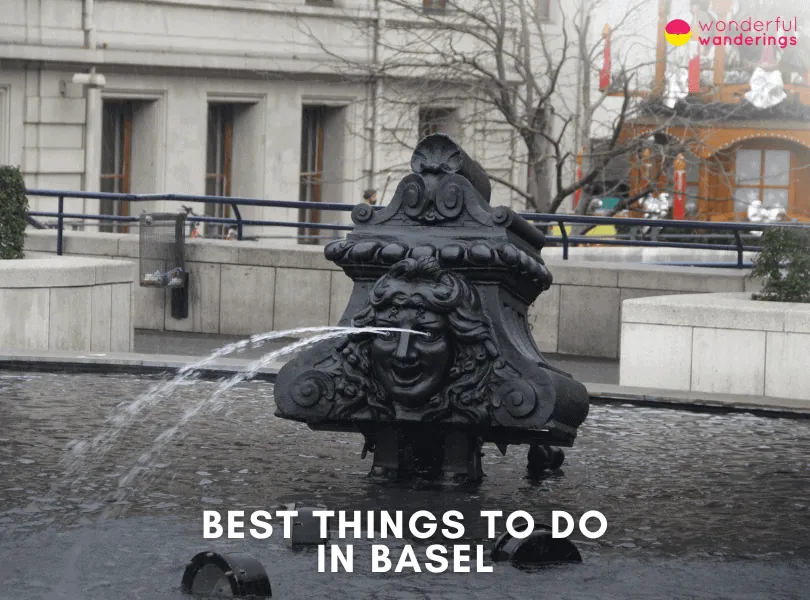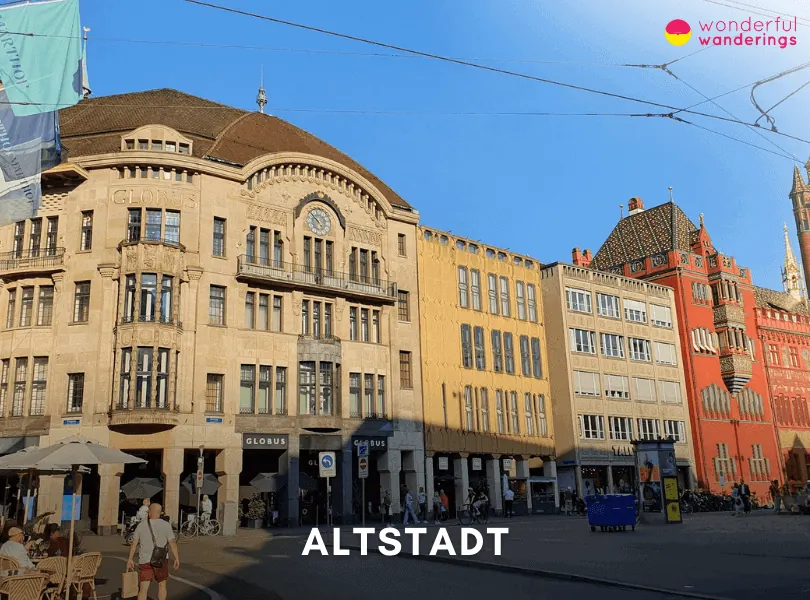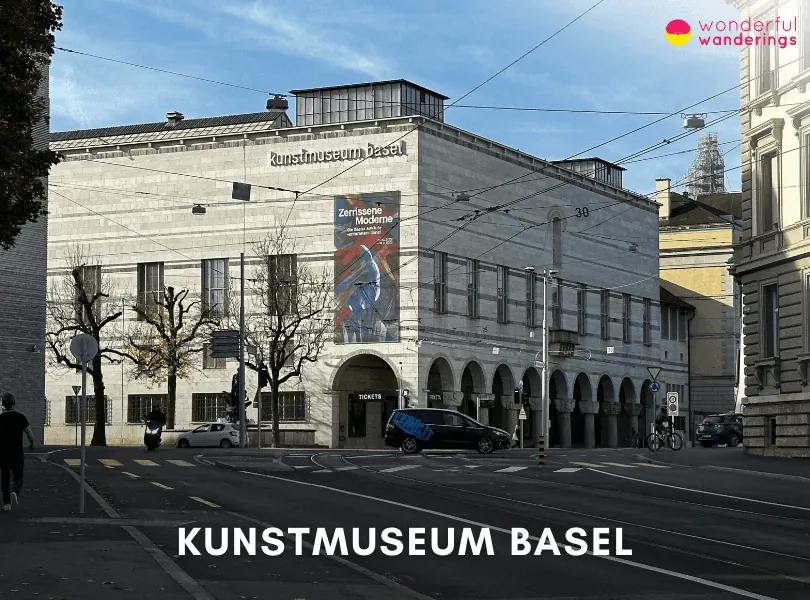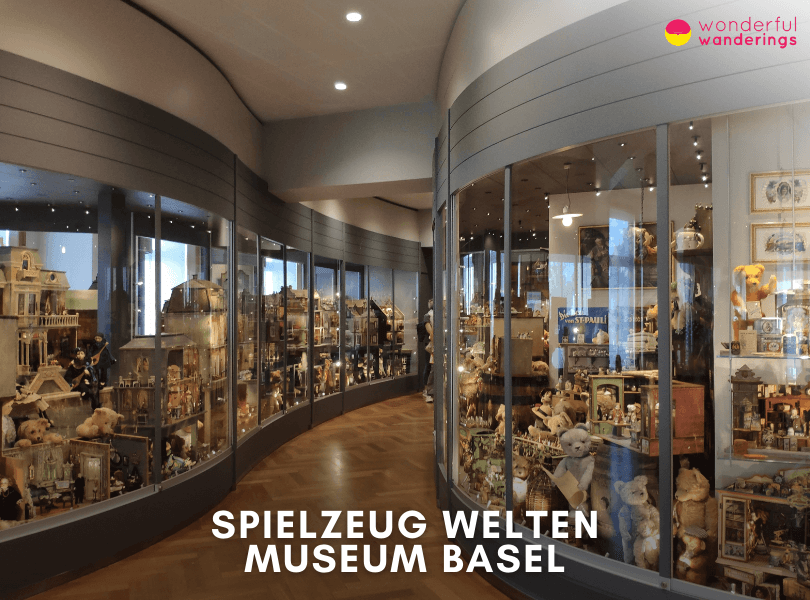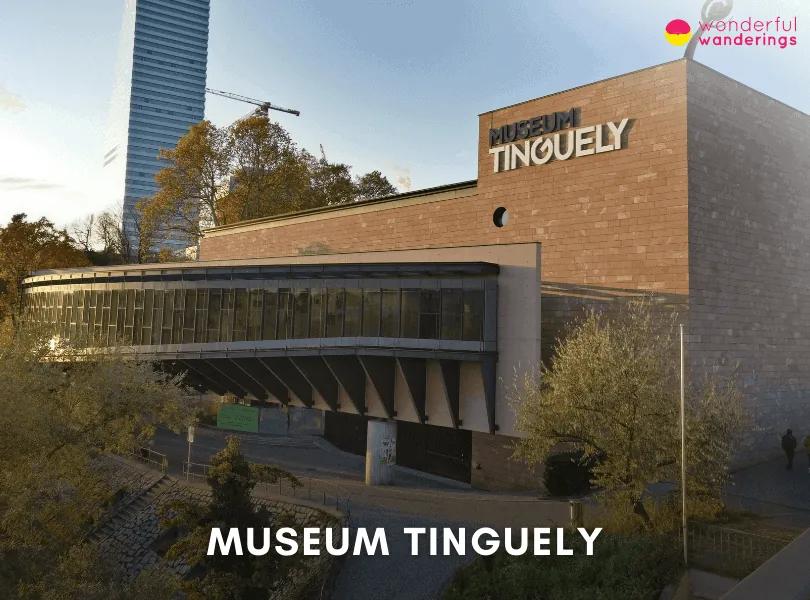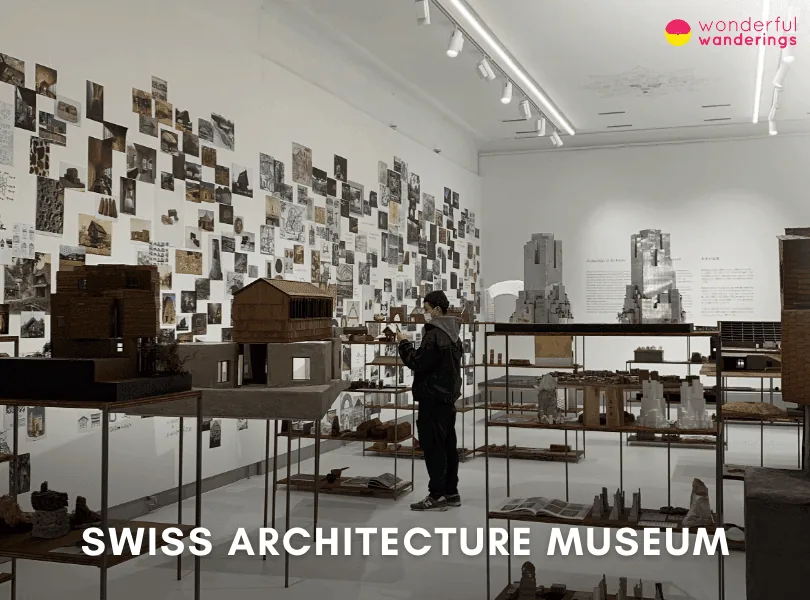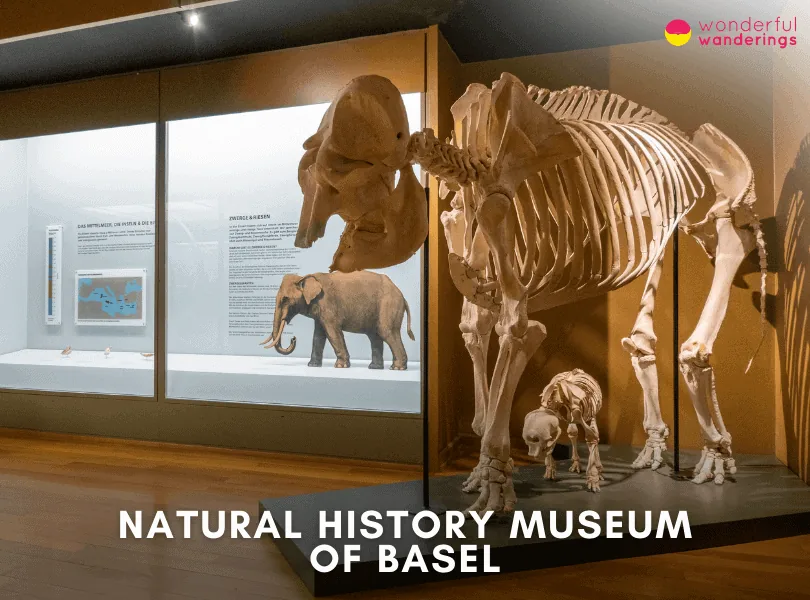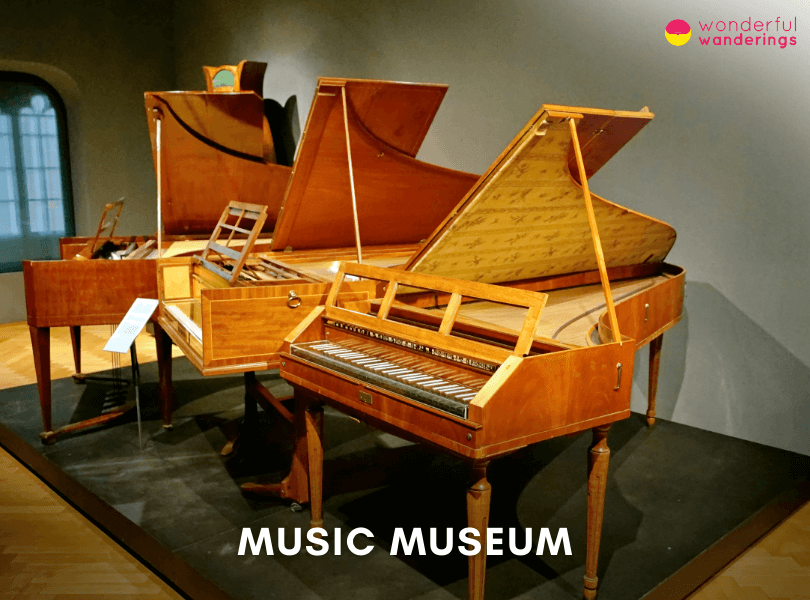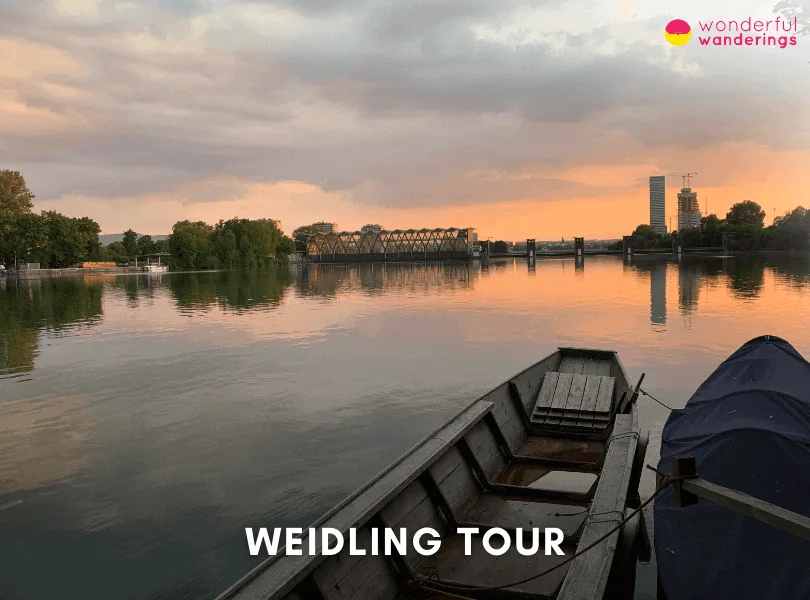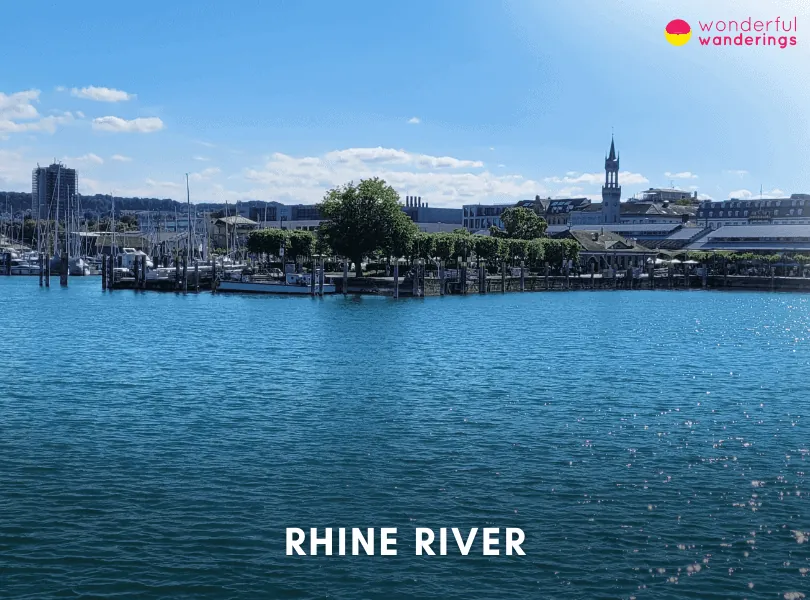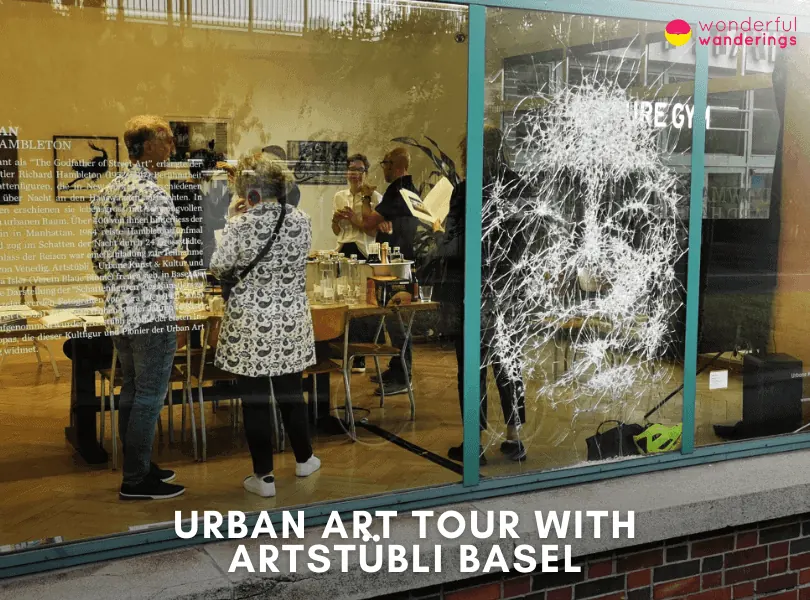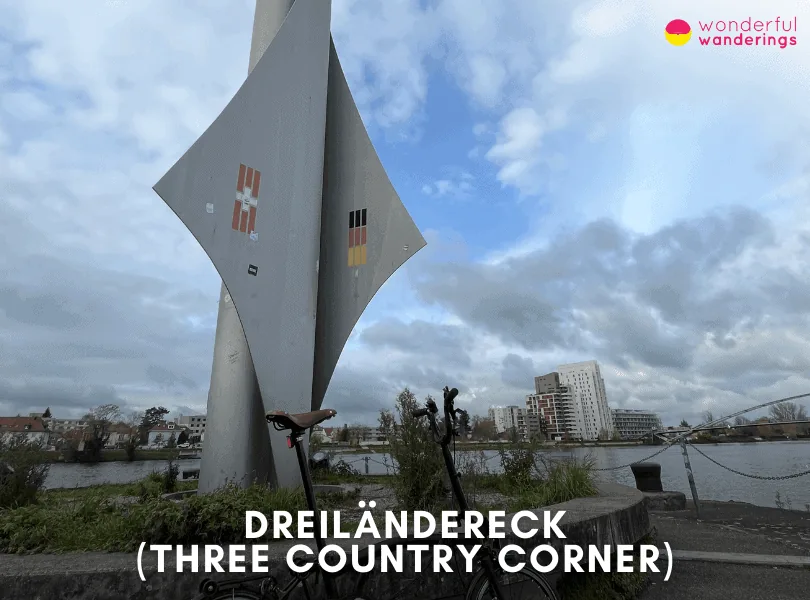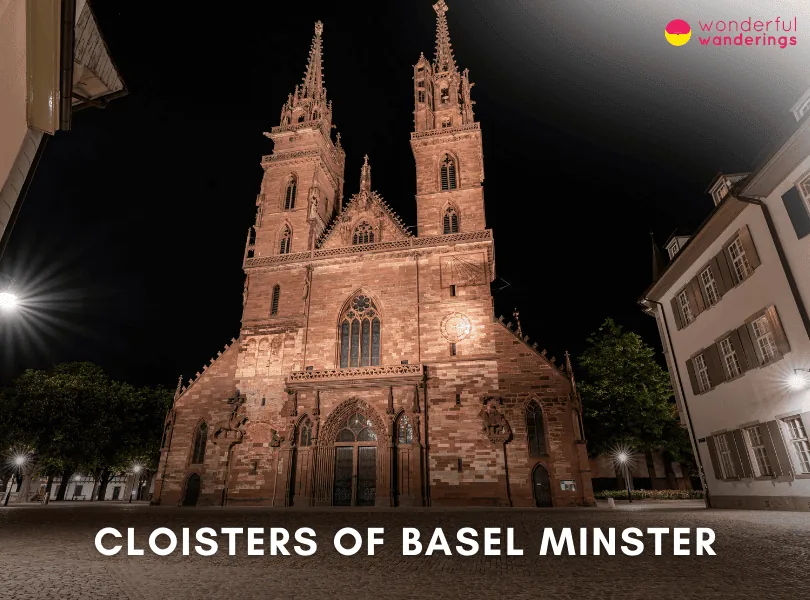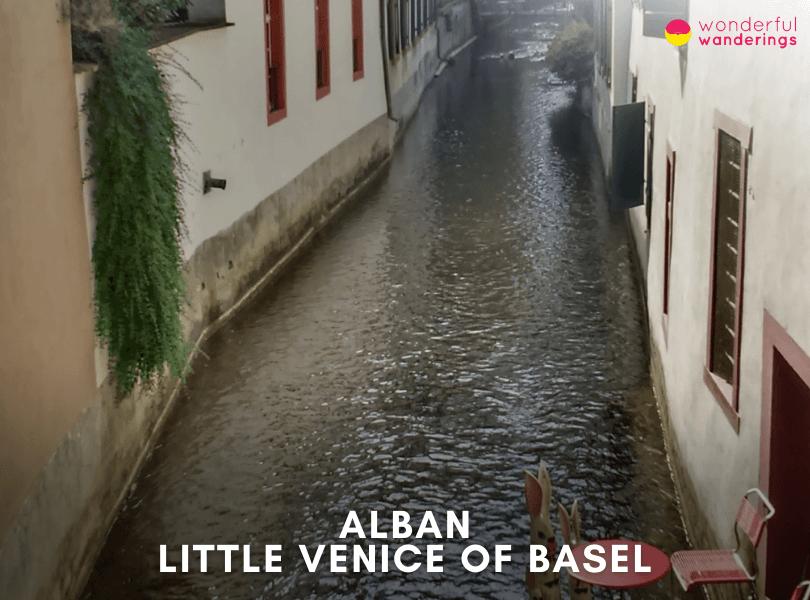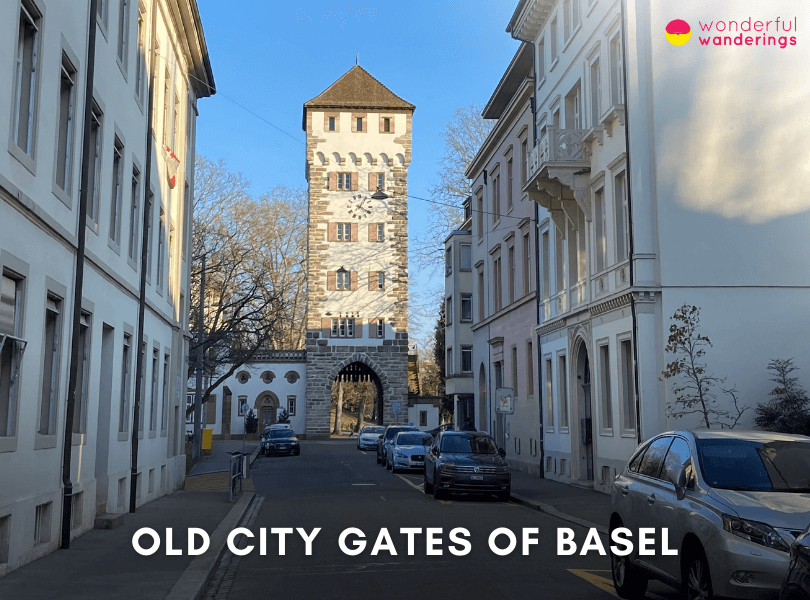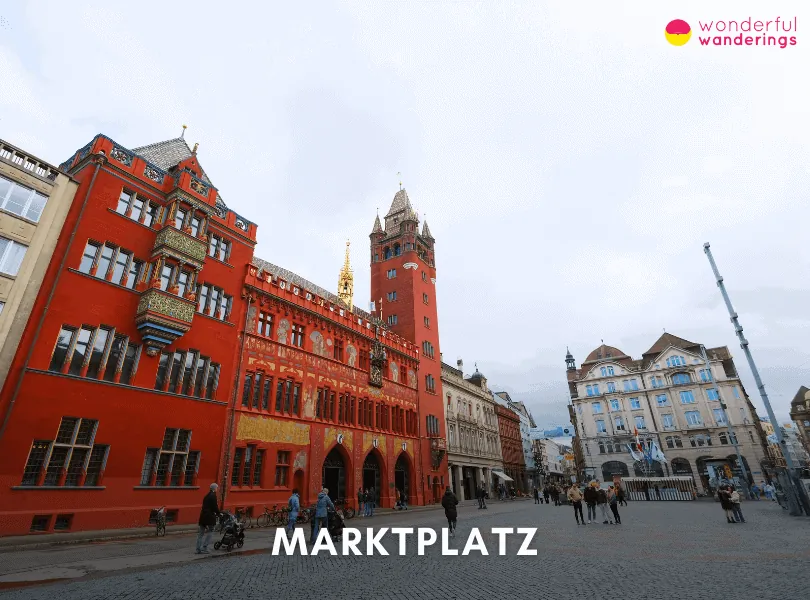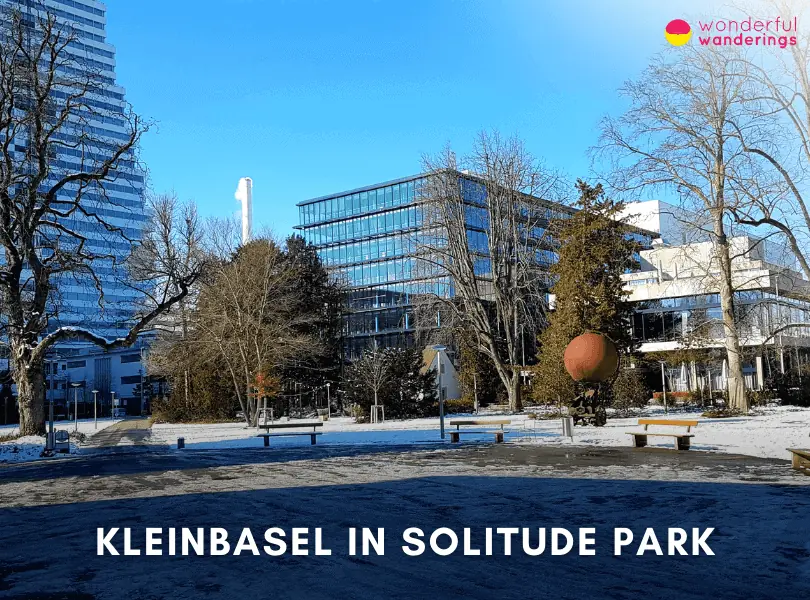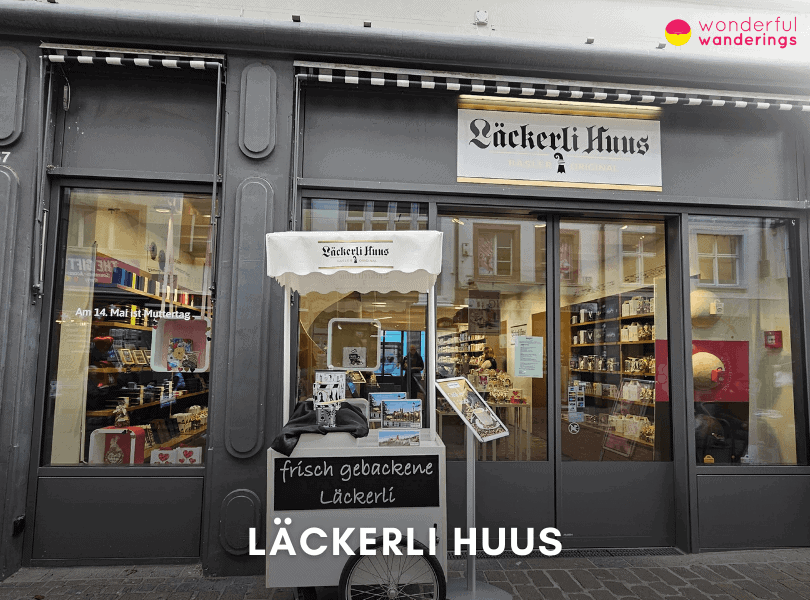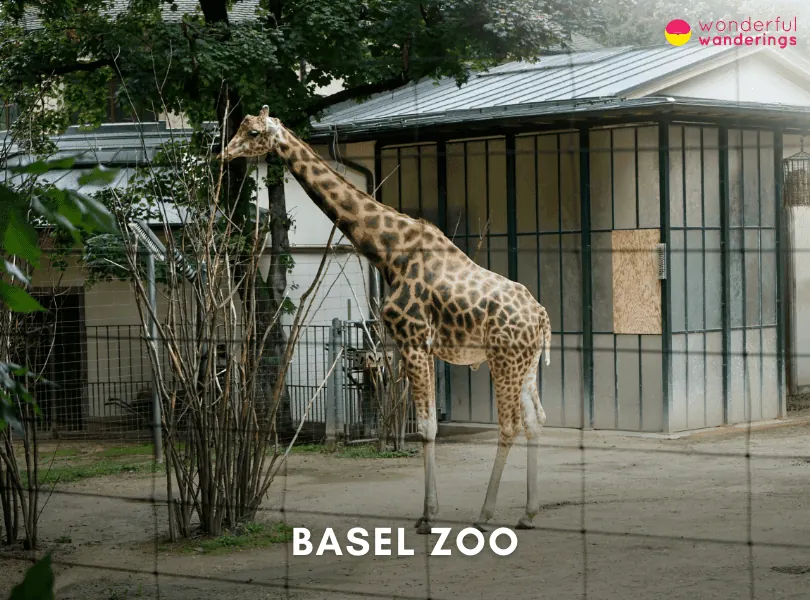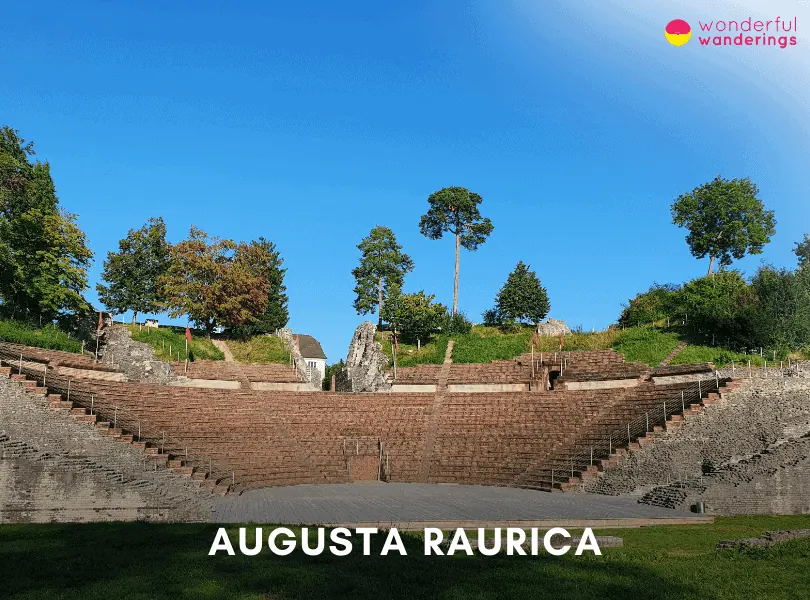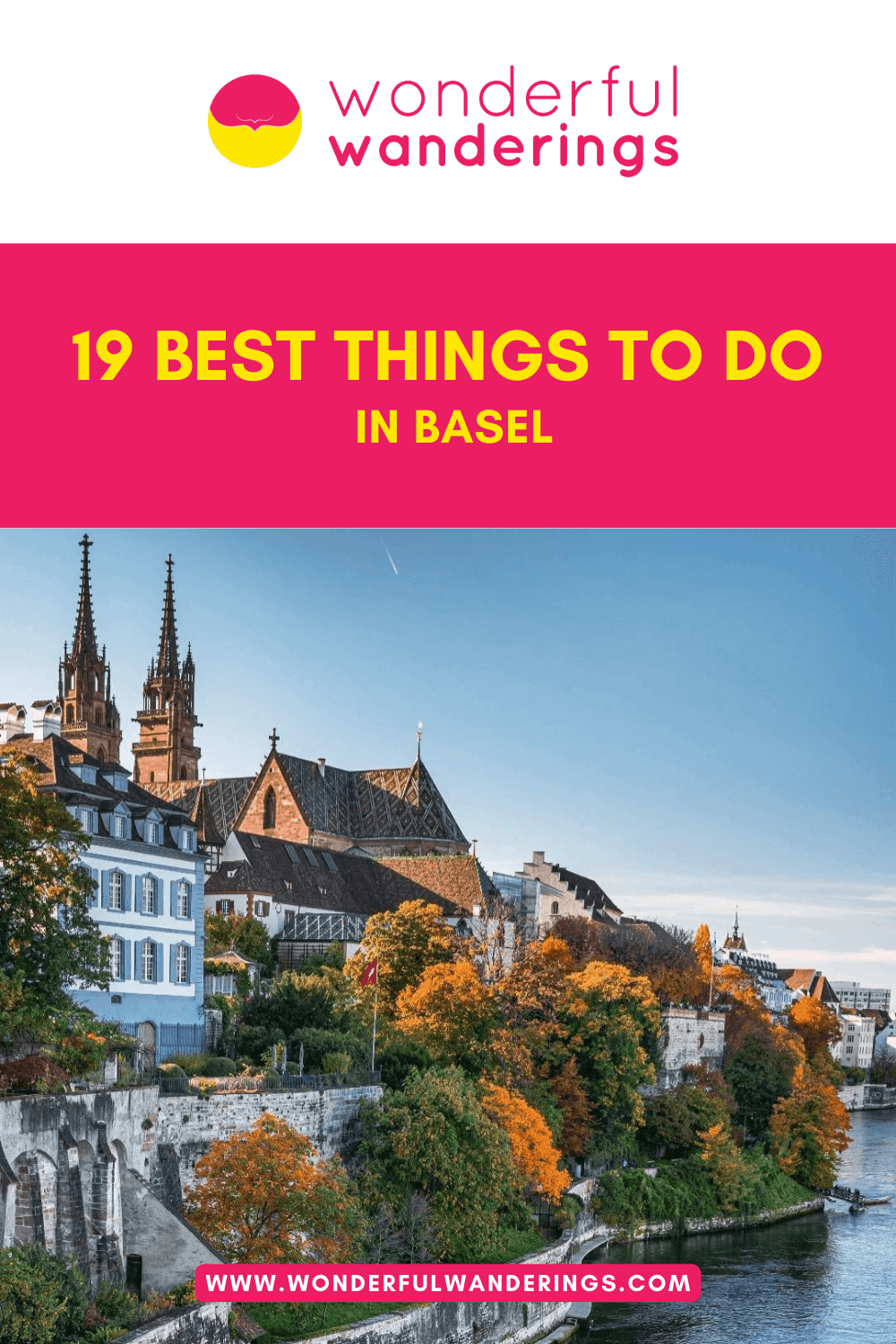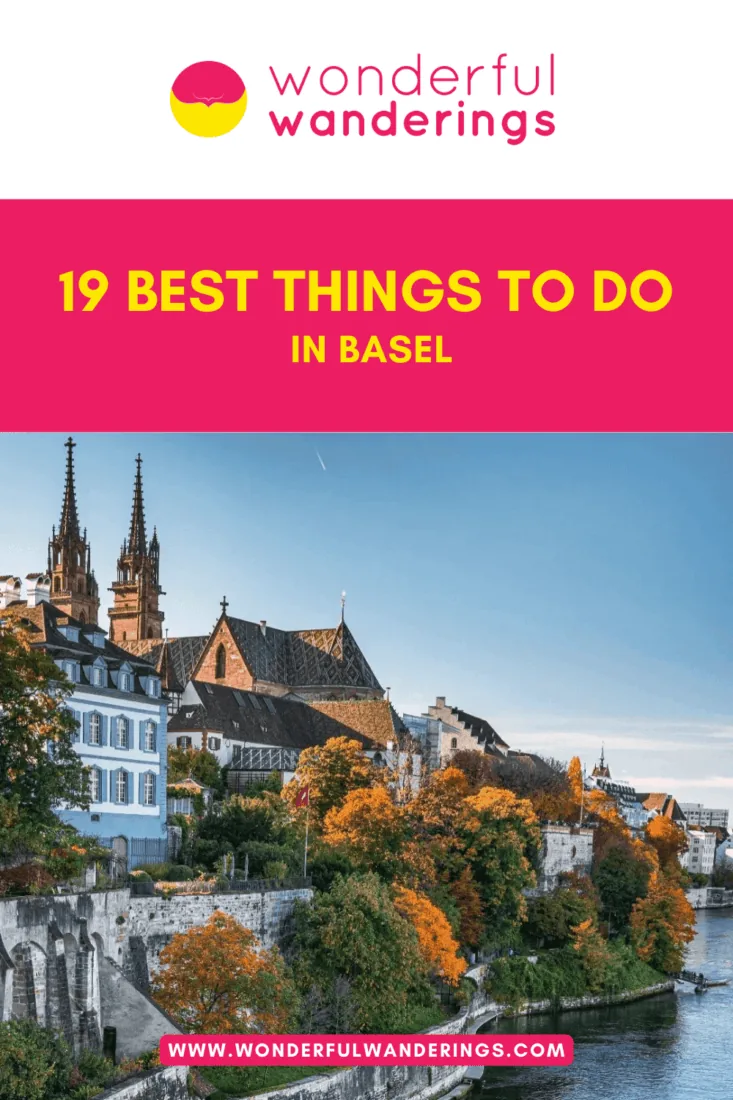Basel is a city in northwestern Switzerland, the capital of the region. It is near the convergence of the Swiss, French and German borders, with suburbs extending into France and Germany. Its geographical coordinates are 47.5596° N, 7.5886° E. It is the largest city in the half-canton of Basel-Stadt, which is virtually coextensive with the city itself. The city lies along the Rhine River, at the mouth of the Birs and Wiese rivers, marking the entrance to the Swiss Rhineland. Basel has a population of 173,422 as of the latest census.
The history of Basel dates back to the middle Paleolithic period, with the first traces of a settlement found around 130,000 years ago. The Celts fortified the area in the first century BC and the Romans later founded the Colonia Raurica at the same location. Basel was admitted into the Swiss Confederation in 1501 and became a center of humanism and the Protestant Reformation in Switzerland. The city’s growth was further propelled by the silk-weaving and dyeing industries, which gave rise to today’s pharmaceutical and chemical companies. Basel has gained a reputation as a leading architectural metropolis, with its multi-functional stadium “St. Jakob-Park” winning the Pritzker Prize, the most prestigious award for architects, in 2001. Today, Basel is a financial and commercial hub and a celebrated city of culture.
Basel is an important distributing center for foreign trade and a significant hub for the Swiss chemical and pharmaceutical industries. It contributes to one-third of Swiss Customs’ revenue. Basel is a nodal point of the railways of Europe, making it a crucial part of the country’s transportation network. Basel is in the Central European Time (CET) zone. It observes Central European Summer Time (CEST) during daylight saving time, which is UTC/GMT +2 hours. Daylight saving time in Basel typically starts in late March and ends in late October.
Listed below are the best things to do in Basel.
- Altstadt (Old City). Basel’s Altstadt or Old City, is a historic area in Switzerland, known for its architectural diversity and medieval structures. It is located in the heart of Basel, near the Rhine River. The Old City features landmarks such as the Basel Cathedral, which has been standing for over 800 years and the Town Hall, a richly ornamented structure. The Old City, built on two hills along the Rhine River, offers views and a glimpse into Basel’s history. The area is suitable for all visitors, who can enjoy the historical sites, shops and local markets.
- Kunstmuseum Basel. The Kunstmuseum Basel, located in Switzerland, is a leading institution in contemporary art and houses the world’s oldest public art collection. The museum’s collection includes 4,000 artworks and 300,000 drawings and prints from seven centuries, featuring works from artists like Henri Matisse and Pablo Picasso. The museum, divided into three venues – Hauptbau, Neubau and Gegenwart, offers a journey through art history from the fifteenth century to the present. Visitors can explore the collection, participate in guided tours and attend special exhibitions. The museum offers a variety of activities, including guided tours and workshops, for an engaging and educational experience.
- Spielzeug Welten Museum Basel. The Toy Worlds Museum Basel, located in Basel, is a unique institution that opened in 1998. It spans four floors and covers 1,022.22 square meters (11,000 square feet). The museum houses a vast collection of dolls, teddy bears, miniatures, carousels and other vintage play objects, making it the largest of its kind in Europe. The collection includes toys from 1870 to 1920, with some older pieces like a 1904 Steiff bear. The museum’s focus is on preserving and showcasing the history of play. Visitors can explore independently or opt for guided tours in English, German and French. The museum appeals to those interested in the history of toys and play, including children, families, collectors and enthusiasts.
- Museum Tinguely. Museum Tinguely, located in Basel, showcases the works of Swiss artist Jean Tinguely. The museum, designed by Mario Botta, opened in 1996. It houses the largest collection of Tinguely’s kinetic art, covering four decades of his career. The collection includes sculptures, drawings, documents, posters, catalogs and photographs. The museum offers events, guided tours and hands-on opportunities. It provides free entry on late Thursdays. The museum caters to a broad audience, including art lovers, students and families.
- Swiss Architecture Museum. The Swiss Architecture Museum in Basel, established in 1984, focuses on contemporary architectural issues in Switzerland through temporary exhibitions and events. With an average of four exhibitions annually, the museum connects history and the present, contributing to international debates on architecture, urban development and related socio-political aspects. Visitors can explore exhibitions, participate in guided tours and engage in discussions, talks and workshops. The museum targets professionals and the broader public interested in architecture.
- Natural History Museum of Basel. The Naturhistorisches Museum Basel, established in 1821, is located in Basel. It houses over 11 million objects across various fields, such as zoology, entomology, mineralogy, anthropology, osteology and paleontology. The museum offers an “Archives of Life” collection, providing insights into diverse species and natural phenomena. It hosts special events, including late-night exhibitions with a museum bar and DJ. Special exhibitions, like “SEXY – Driving Force of Life”, are featured, exploring topics like the role of sex in reproduction. Some exhibitions may require additional admission fees.
- Music Museum. The Basel Historical Museum – Musikmuseum, located at 9 Im Lohnhof, Basel, 4051, Switzerland, houses Switzerland’s largest collection of musical instruments. It is part of the Historisches Museum Basel, a significant cultural institution. The museum’s collection includes over 3,000 musical instruments, with a permanent exhibition of 650 instruments. These span five centuries of music history and include the Ab Yberg organ, a bass viola da gamba by Joachim Tielke and a 1572 virginal from the Netherlands. The museum’s three floors each focus on a specific theme or type of instrument, offering insights into the social context of each instrument and music’s societal role over the centuries. The museum attracts music enthusiasts, historians and culturally curious visitors of all ages.
1. Altstadt
Altstadt or the Old City, is at Marktplatz, Basel 4000, Switzerland, a historic area known for its architectural diversity and well-preserved medieval structures. It is in the heart of Basel, near the Rhine River. The Old City features landmarks such as the Münster or Basel Cathedral, which has stood gracefully above the city for over 800 years and the richly ornamented Town Hall. Visitors can explore the medieval city center on foot, discovering the Basel Munster Cathedral, City Hall and Marktplatz, where locals sell fresh fruits and vegetables. The Old City is built on two hills along the Rhine River, offering views and a glimpse into Basel’s history.
Visitors can reach Altstadt by public transportation, such as buses and trams, with the nearest station being Basel Marktplatz. There is no admission cost to enter the Old City, as it is a neighborhood open to the public. The area is for all visitors, including families, couples and solo travelers, who can enjoy the historical sites, shops and local markets.
2. Kunstmuseum Basel
The Kunstmuseum Basel, formerly known as the Museum für Gegenwartskunst in German and Museum of Contemporary Art, is a pioneer in contemporary art, located at St. Alban-Graben 8, CH-4010 Basel. It is a significant cultural institution known for housing the oldest public art collection in the world. It is one of the most important art museums in Switzerland. The museum’s collection comprises 4,000 paintings, sculptures, videos and works of installation art, as well as 300,000 drawings and prints from seven centuries. The museum’s collection includes works from famous artists such as Henri Matisse and Pablo Picasso. Visitors can engage with these masterpieces and different art movements and styles. The museum’s three venues, the Hauptbau, Neubau and Gegenwart, offer a journey through art history from the fifteenth century to the present. Visitors can explore the vast collection, participate in guided tours and attend special exhibitions. The museum offers a variety of activities, including guided tours and workshops, that provide an engaging and educational experience.
Visitors can reach the Kunstmuseum Basel by various means of transportation, including public transit and private vehicles. The museum’s admission cost varies depending on the exhibitions and events. Kunstmuseum Basel is best for all visitors, including art enthusiasts, students, families and tourists interested in art history and contemporary art.
3. Spielzeug Welten Museum Basel
The Spielzeug Welten Museum Basel, known as the Toy Worlds Museum Basel, is a unique institution in Basel. It is at Steinenvorstadt 1, 4051 Basel. The museum opened in 1998, spans four floors and covers 11,000 square feet (12,22.22 square yards). This museum is home to an extensive collection of dolls, teddy bears, miniatures, carousels and other vintage objects of childhood play, making it the largest of its kind in Europe. The collection features toys from between 1870 and 1920, though some older pieces, such as a Steiff bear from 1904, are among the more than 6,000 objects in the museum’s care. The museum focuses on preserving and showcasing the history of play through its vast collection. Visitors can explore the museum independently or opt for guided tours in English, German and French for a more educational experience.
Visitors can reach the Spielzeug Welten Museum Basel by public transport. Visitors can take tram No. 8 to Barfüsserplatz or tram No. 11 to the Theater or Barfüsserplatz stop from the Basel SBB train station. Visitors can take tram No. 6 to the Barfüsserplatz or Theater stop from Basel, Badischer Bahnhof train station. Parking facilities near the SBB train station (Centralbahnparking), Elisabethen, Steinen or Parkhaus Badischer Bahnhof, are recommended for visitors arriving by car. The standard entry fee for the museum is €6.5 ($7.3, £5.5) and seniors and persons with disabilities can enter at a discounted rate of €4.7 ($5.2, £3.9). Children and youth up to 16 years of age can enter for free. The museum is best suited for individuals interested in the history of toys and play, including children, families, collectors and enthusiasts.
4. Museum Tinguely
Museum Tinguely is at Paul Sacher-Anlage 2, 4002 Basel. It is an art museum dedicated to the works of Swiss painter and sculptor Jean Tinguely. The museum, situated in Solitude Park by the Rhine, was designed by Ticinese architect Mario Botta and opened its doors on October 3, 1996. It houses the world’s largest collection of Tinguely’s kinetic works, spanning over four decades of his career. Tinguely was known for his innovative and dynamic sculptures, often created from everyday materials designed to move and make noise. The museum’s collection includes his sculptures, drawings, documents, exhibition posters, catalogs and photographs. Visitors to the museum can explore Tinguely’s intricate early works, the explosive happenings and collaborations of the 1960s and the musical, monumental and somber works of his late period. The museum offers various events, including performances, guided tours and hands-on participation opportunities.
Visitors can reach Museum Tinguely via public transport or by car. From the SBB (Central Railway Station), one can take Tram no. 1 or 2 to “Wettsteinplatz”, then switch to Bus no. 31 or 38 to “Tinguely Museum”. Bus no. 36 is available if coming from Badischer Bahnhof. The highway exit “Basel Wettstein/Ost” leads to the museum, with parking available directly under the bridge or at the car park Badischer Bahnhof for Visitors who opt to drive. The museum is accessible to all, with wheelchair access to all exhibition spaces. The admission cost for adults at the Museum Tinguely is €16.7 ($18.8, £14). Reduced admission is available for students, apprentices and people with disabilities at €11.1 ($12.5, £9.4). Children under 16 years of age can enter the museum for free. The museum offers free admission on late Thursdays from 6 to 9 pm. Museum Tinguely is best for a wide audience, including art enthusiasts, students, families and anyone interested in the intersection of art and mechanics.
5. Swiss Architecture Museum
The Swiss Architecture Museum, known as S AM or Schweizerisches Architekturmuseum, is a prominent architecture museum in Basel, established in 1984. The museum is at Steinenberg 7, 4051 Basel. The museum is a leading institution dealing with contemporary architectural issues in Switzerland. It specializes in temporary exhibitions, with an average of four exhibitions each year, focusing on interdisciplinarity and the connection between history and the present. The museum contributes to international debates on architecture, urban development and related socio-political aspects through its exhibitions and events. Visitors to the museum can explore these exhibitions, participate in guided tours and engage in discussions, talks and workshops. The museum’s exhibitions are supplemented by guided tours, podium discussions, talks, conferences, workshops, work presentations and accompanying publications.
Visitors can reach the Swiss Architecture Museum by public transportation, as Basel has an efficient network of trams and buses. The museum offers public guided tours of every exhibition and the duration of these tours is typically one hour. The cost of admission to the exhibition is required, but the guided tour is free. Private guided tours are available any time, with the cost for a private guided tour during opening hours being €233 ($262, £196). The standard admission fee of €11 ($12, £9) per person, is reduced to €7 ($8, £6) for groups of 10 or more. The museum appeals to professionals such as architects, engineers and planners. It primarily targets the broader public with an interest in architecture.
6. Natural History Museum of Basel
The Natural History Museum of Basel, known as Naturhistorisches Museum Basel, is a prominent museum in Basel, established in 1821. The museum is at Augustinergasse 2, 4001 Basel, in the heart of the city. The museum is home to extensive collections that span various fields such as zoology, entomology, mineralogy, anthropology, osteology and paleontology. The museum has over 11 million objects, making it a treasure trove of natural history artifacts. The “Archives of Life” collection offers an in-depth look into the diverse species and natural phenomena that make up our planet. The museum hosts special events, such as late-night exhibitions with a museum bar and DJ, providing a unique and engaging atmosphere. Visitors to the museum can explore these vast collections, delve into the mysteries of the natural world and gain insights into the diverse species inhabiting our planet. The museum hosts special exhibitions, such as “SEXY – Driving Force of Life”, which explores the role of sex in reproduction.
Visitors can reach the Natural History Museum of Basel by bus from Basel, Bahnhof SBB to Basel, Universität. The journey takes 4 minutes. The museum is family and children-friendly, making it an ideal destination for people of all ages. The admission fee for the Natural History Museum of Basel is €6.80 ($7.20, £5.90) for adults and €4.80 ($5.10, £4.20) for young people. Children under the age of 13 can enter the museum free of charge. Members of the “Friends of the Naturhistorisches Museum Basel” association, holders of the Swiss Museum Pass and MUSEUMS-PASS-MUSÉES can enter the museum for free. Some hotels provide guests with a Basel Card that offers discounted admission. Visitors with a Swiss Raiffeisen Bank Member Plus card option can gain free entry. The museum occasionally hosts special exhibitions requiring additional admission fees. Special exhibitions or events have an additional cost. The museum is for everyone.
7. Music Museum
The Music Museum, known as the Basel Historical Museum – Musikmuseum, is a unique cultural institution in Basel. The museum is at 9 Im Lohnhof, Basel, 4051, Switzerland. It is home to the country’s largest collection of musical instruments, making it a significant destination for music enthusiasts. The museum is one of three components of the Historisches Museum Basel, a famous cultural institution. The Music Museum has an extensive collection of over 3,000 musical instruments, spanning five centuries of music history. The permanent exhibition displays 650 instruments, including notable pieces such as the famous Ab Yberg organ, a bass viola da gamba made by Joachim Tielke and a 1572 virginal from the Netherlands. Visitors can explore the museum’s three floors, each housing a specific theme or type of instrument. The museum offers insights into the social context of each instrument, providing a comprehensive understanding of music’s role in society over the centuries.
Visitors can reach the Music Museum by tram, a usual mode of transportation in Basel. The admission fee for the Music Museum is €9.3 ($10.5, £7.9) for adults, with a reduced fee for eligible individuals. A combination ticket is available for €18.6 ($21, £15.8), which provides access to all three exhibition halls of the Historisches Museum Basel, including the Music Museum. For children up to 13 years old, admission is free. The Music Museum appeals to music enthusiasts, historians and culturally curious visitors of all ages.
8. Weidling tour
The Weidling tour in Basel, is a unique and traditional experience that offers visitors a chance to explore the city from a different perspective. A Weidling is a flat-bottomed boat, traditionally used for transportation on the Rhine River. The tour takes place in Basel near the borders of France and Germany. The Weidling tour allows visitors to experience the city’s history and culture from the vantage point of the Rhine River, which has played a significant role in Basel’s development. Visitors are rowed downstream during the tour, offering them a chance to view the city’s architecture, including the Basel Minster church and the Grand Hotel Les Trois Rois. The tour provides an opportunity to observe the Rhine River current and the skill of the oarsmen navigating it.
Visitors can reach Basel and subsequently the Weidling tour, through various modes of transportation. The city is accessible via three railway stations and major motorways. Basel’s EuroAirport is shared with France and Germany, making it a convenient entry point for international visitors. The city’s public transportation system, including buses and trams, provides easy access to various parts of the city. Weidling tours and river activities in Basel range from inexpensive ferry rides to guided tours costing up to €67.13 ($73.38, £58.18) per person. Tips are appropriate to show appreciation for good service. The Weidling tour is suitable for a wide range of audiences, including families, couples and individuals interested in experiencing a unique aspect of Basel’s culture and history.
9. Rhine River
The Rhine in Basel, is a significant landmark and a source of inspiration for the city’s inhabitants. This river, which has played a crucial role as a trading route, has greatly influenced the city’s development and continues to contribute to the quality of life in Basel. The Rhine flows through Basel, a city located at the tripoint of Switzerland, Germany and France. This location has made Basel a major transportation hub for Europe. Visitors to the Rhine in Basel can enjoy a variety of activities. Locals, students and businesspeople gather on the river’s banks to sunbathe, stroll and relax in the summer months. A dip in the Rhine is a usual summer activity for confident swimmers. The river offers a unique tradition called the “River Fairies”, a boat trip that uses the Rhine’s natural current to move the boat back and forth.
Visitors can use Switzerland’s efficient transportation system to reach the Rhine in Basel. Basel is well-connected by train and accessible from other Swiss cities. The cost of crossing the Rhine using one of the four ferries, “Wild Maa”, “Leu”, “Vogel Gryff” and “Ueli”, is €1.86 ($2.09, £1.57) for adults and €0.93 ($1.05, £0.79) for children. The Rhine in Basel offers activities suitable for a wide range of visitors, from families to solo travelers and from nature enthusiasts to history buffs.
10. Urban Art Tour with Artstübli Basel
The Urban Art Tour with Artstübli is a unique exploration of Basel’s lively street art scene. Artstübli, located at Steinentorberg 28, Basel, is a platform that showcases all contemporary aspects of urban art and culture, from graffiti to street art. Philipp Brogli founded Urban Art Tour with Artstübli in 2004. It has since become a gallery and a hub for urban art in Basel, occupying a 125 square meter (149.50 square yards) space in the round buildings of the Markthalle Basel. Visitors are guided through selected areas of the city, from the city center to the railway line, by artists and connoisseurs of the urban art scene. This tour offers a unique opportunity for visitors to engage themselves in the urban art culture of Basel, exploring the city’s rich street art and graffiti and learning about the artists and the stories behind their works.
Visitors can reach the Urban Art Tour with Artstübli by train, as Basel’s Swiss SBB railway station is a hub for international travel. The city is a graffiti hotspot and the journey to Basel offers a preview of the urban art scene with graffiti visible from the train windows. The admission fee for the Urban Art Tour with Artstübli varies on the group size, ranging from €185 to €555 ($210 to $630, £160 to £480). The public group tour price is at €27 ($30, £23) per person. The Urban Art Tour with Artstübli is best suited for individuals, couples and groups interested in contemporary art, particularly, urban and street art. It offers a unique perspective on Basel’s art scene, making it an engaging activity for art enthusiasts of all ages.
11. Dreiländereck (Three Country Corner)
Dreiländereck, known as the Three Country Corner, is a unique monument in Basel, at Westquaistrasse 75, 4057 Basel. This monument marks the tripoint where the borders of France, Germany and Switzerland converge. The actual tripoint is situated in the middle of the Rhine River, while the monument is positioned on Swiss territory, 150 meters (164.04 yards) southeast of the actual tripoint. The monument, designed by Wilhelm Münger and erected in 1956, is shaped like a futuristic rocket with three wings, each bearing the national flag of the corresponding country. The Dreiländereck is a geographical point of interest and a symbol of unity and peace, marking the shared border that once signified perpetual hostility culminating in World War II. It serves as a leisure center and tourist attraction today. Visitors can explore the Dreiländereck Building, a recreational complex that houses an event room and a bar. The complex features a terrace with an artificial beach, offering visitors a unique opportunity to glimpse all three countries while enjoying a drink.
Visitors can reach Dreiländereck by taking the #8 tram from the Basel Train Station to the Kleinhünigen stop, followed by a 20-minute walk. Visitors can take the same tram to Schifflände and look for water-based transportation to Dreiländereck. There is no admission cost to visit the Dreiländereck monument. The site is suitable for all visitors, including families, history enthusiasts and those interested in unique geographical features. It offers a unique opportunity to stand at a point where three countries meet, making it a memorable experience for all.
12. Cloisters of Basel Minster
The Cloisters of Basel Minster, known as Basel Cathedral, are a significant part of the religious structure in the Swiss city of Basel. The cathedral is at Münsterpl. 9, 4051 Basel. It was a Catholic cathedral, now a Reformed Protestant church. The original cathedral was built between 1019 and 1500 in Romanesque and Gothic styles. The cloisters were renewed in the 15th century and feature net vaulting and curvilinear tracery. A smaller cloister to its east was constructed between 1467 and 1487. The Cloisters of Basel Minster are remarkable due to their historical significance and architectural beauty. Visitors can explore the cloisters, appreciate the intricate architectural details and learn about the history of the cathedral. The cathedral offers a view of the city and surrounding area after a 250-step climb on either the St George’s or St Martin’s tower.
Visitors can reach the Basel Minster by various means of public transportation. The nearest tram/bus stop is Markplatz. The journey from Basel to Basel Minster is quick and inexpensive, with the travel option best suited to the visitor’s needs. Entry to the building is free, with a nominal fee of €2.78-€4.63 ($3.14-$5.24, £2.37-£3.96) to climb the towers. The cathedral and its cloisters are for all visitors, including families, history enthusiasts and architecture lovers.
13. Alban, Little Venice of Basel
St. Alban, often called the “Little Venice of Basel”, is a charming district in Basel. This area is known for its romantic and quiet atmosphere, steeped in myth and mystery. It is marked by its millstream and riverside setting, traditional handicrafts and a blend of old timber-framed buildings and modern architecture. The district is home to the medieval paper mill and the Museum of Contemporary Arts, offering a fascinating mix of old and new. Visitors can explore the unique architecture, visit the museums and enjoy the peaceful riverside setting. The district’s unique blend of history and modernity makes it a must-visit for anyone in Basel.
St. Alban is straightforward. Basel is well-connected by train and air, with the Basel-Mulhouse-Freiburg airport offering flights to many European destinations. From the city center, St. Alban is easily accessible on foot or by public transportation. It is free to enter St. Alban and has no admission cost. Individual attractions such as museums have their own admission fees. The district is best for all visitors, including families, couples and solo travelers. St. Alban offers a peaceful and culturally rich experience enjoyed by people of all ages.
14. Old City Gates of Basel
The Old City Gates of Basel, known as the Walls of Basel, is a significant historical landmark in Basel. These gates are remnants of the city’s ancient fortifications, with three of them still standing today. the Spalentor (Gate of Spalen), the Sankt-Alban-Tor (Gate of Saint Alban) and the Sankt-Johanns-Tor (Gate of Saint John). These gates are in the central part of Basel, with the exact addresses being Spalentor, Spalenvorstadt, 4056 Basel for the Spalentor and St. Johanns-Tor, St. Johanns-Vorstadt, 4056 Basel for the Sankt-Johanns-Tor. The Old City Gates of Basel are national heritage sites and are among the most beautiful gates in Switzerland. Visitors can admire the intricate designs and carvings on the gates and explore the surrounding areas, which are part of Basel’s charming Old Town. This area is rich in architectural diversity, with ancient houses, narrow alleys and the Rhine River adding to its allure.
Visitors can reach the Old City Gates of Basel by public transport. Visitors can take tram route 6 towards Riehen from Basel, stopping at ‘Fondation Beyeler.’ Tram route 8 is available to Basel from outside the Vitra Campus in Weil am Rhein. There are buses available for the same journeys. The Old City Gates of Basel, including the Spalentor (Gate of Spalen), St. Alban-Tor and St. Johanns-Tor, do not require an admission fee to visit. The gates are open to the public to be explored freely. Each gate offers a unique glimpse into the city’s medieval past and is a significant part of Basel’s cultural heritage. The Old City Gates of Basel and the surrounding Old Town are best suited for history enthusiasts, architecture lovers and those interested in exploring the cultural heritage of Basel. The area’s rich history and beautiful architecture make it a fascinating place for adults and older children.
15. Marktplatz
Marktplatz, known as the Market Square, is a significant location in Basel. It is at Marktplatz, 4001 Basel. This square is dominated by the impressive City Hall. The Marktplatz is a political hub and a lively marketplace that operates throughout the week, selling fresh vegetables, fruits and flowers. It is a place where lovers of good food can find delicious local produce on the market stalls, as well as many specialties from the region, Switzerland and the entire world. Visitors to the Marktplatz can enjoy the views of the Rhine River and the city cathedral, cross the river by a short ferry ride and walk along the old town buildings at Grossbasel.
Visitors can reach Marktplatz by various means of public transportation. From Basel SBB Station, the quickest way to get to Marktplatz is by tram, which takes just 5 minutes and costs €1.85 ($2.08, £1.57). There is no admission cost to enter the Marktplatz, making it an accessible destination for all visitors. The activity is best suited for individuals interested in local culture, history and food, as well as families looking for a leisurely day out in the city.
16. Kleinbasel (Right Bank of the Rhine) in Solitude Park
Kleinbasel, known as the Right Bank of the Rhine, is a lively and culturally rich district in Basel. It is on the northern side of the Rhine River, opposite the Old Town or Grossbasel. Kleinbasel is known for its cheerful atmosphere, with a mix of residential areas, commercial zones and recreational spaces. One of the notable spots in Kleinbasel is Solitude Park, a beautiful park next to the Rhine and the impressive Roche Tower. This park serves as an oasis in the city, offering a play area, a paddling pool and deckchairs for relaxation. Visitors to Kleinbasel can enjoy a variety of activities. Visitors can stroll along the Rhine, visit the numerous art installations or relax in Solitude Park. During the summer, the Kleinbasel banks of the Rhine become a popular spot for swimming. The Rhine bathing houses provide access to the water and the colorful Wickelfisch swim bags, invented in Basel, keep your clothes dry while you enjoy a swim.
Visitors can use the extensive public transport network in Basel to get to Kleinbasel. Trams and buses connect various parts of the city, including Kleinbasel. visitors can take tram route 6 towards Riehen from Basel, stopping at ‘Fondation Beyeler.’ The Rhine river ferries “Wild Maa”, “Leu”, “Vogel Gryff” and “Ueli” link Grossbasel to Kleinbasel. These ferries are driven purely by the current of the Rhine itself, providing a unique way to cross the river. There is no admission cost to enter Kleinbasel or Solitude Park, making them accessible to everyone. Service fees for showers, toilets and changing rooms at the Rhine bathing houses are applicable. Kleinbasel and Solitude Park are for all visitors, including families, couples and solo travelers. The diverse activities and calm environment make it an ideal place for those seeking both adventure and relaxation.
17. Läckerli Huus
Läckerli Huus, known as Läckerli House, is a Swiss confectionery and baked goods manufacturer based in Frenkendorf, in the canton of Basel-Landschaft. The company was founded in 1904 by André Klein and Leopold Mosetter, specializing in the production of Basler Läckerli and other Basel delicacies. The company’s main store is at Gerbergasse 57, 4001 Basel. Läckerli Huus is known for its Basler Läckerli, a unique biscuit made from freshly ground almonds and hazelnuts, the finest honey, orange and lemon peel from sun-ripened fruit and precious spices. Visitors to Läckerli Huus can explore the “World of Indulgence” exhibition, where they can learn about the history of the company, watch videos of the production processes and sample the tasty treats.
Visitors can reach Läckerli Huus in Basel by public transport from Basel. Visitors can take tram route 6 towards Riehen, stopping at ‘Fondation Beyeler’. There are buses available to reach the location. The admission cost for a guided tour at Läckerli Huus is €14 ($16, £12). The tour is for all, including children, adults and groups. It offers an educational and indulgent experience, making it an ideal activity for families, food enthusiasts and those interested in the history and culture of Basel.
18. Basel Zoo
Basel Zoo, known as Zoologischer Garten Basel or affectionately called “Zolli” by locals, is a non-profit zoo in Basel. The zoo is situated at Binningerstrasse 40, 4054 Basel, near the city’s downtown strip of Steinen-Vorstadt and extends in the Birsig stream valley to Basel’s city border with Binningen, Basel-Country. Basel Zoo, established in 1874, is Switzerland’s oldest and largest zoo and it is the most visited tourist attraction in the country with an entrance fee. The zoo is home to different species, including lions, elephants, giraffes and chimpanzees. It is known for its unique park landscape and immediate proximity to the animals. Visitors to Basel Zoo can engage in a range of activities and explore the exotic animal world, visit the domestic animals in the children’s zoo and travel around the world in a single day. The zoo offers personalized tours, providing exciting insights into the world of the zoo. Basel Zoo organizes various events and activities specifically designed for children, including guided tours, educational programs and interactive exhibits. The zoo is committed to spreading awareness about wildlife conservation and offers educational programs for children and adults. It is involved in research and scientific studies, contributing to the global knowledge base and aiding in the development of effective conservation strategies.
Visitors can take public transportation to reach the zoo, as the zoo is accessible and located in the heart of the city. Visitors driving can take the ‘Basel-Süd/City’ exit from the A2 motorway in Switzerland or the A5 motorway in Germany and follow the ‘Zoo’ signs for 3 kilometers (1.86 miles). The admission cost for adults from 20 years is €20.5 ($23, £17.5), for young people 16 to 19 years is €15 ($17, £13), for children 6 to 15 years is €9.3 ($10.5, £8) and for senior citizens aged 64 and over is €18.6 ($21, £16). Basel Zoo is best suited for all people, including children, adults and nature enthusiasts. It offers a thought-provoking and memorable experience for visitors of all ages.
19. Augusta Raurica
Augusta Raurica, known as Augusta Rauricorum, is a Roman archaeological site and an open-air museum located on the south bank of the Rhine River, 20 kilometers (12.43 miles) east of Basel, near the villages of Augst and Kaiseraugst in Switzerland. It is the site of the oldest known Roman colony on the Rhine and is the best-preserved Roman city north of the Alps. The site is rich in history, with the colony playing a significant role in Augustus’ plans of conquest. By the 2nd century AD, Augusta Raurica had become a prosperous commercial trading center and the capital of a local Roman province, with a population estimated at around 20,000 people. Visitors to Augusta Raurica can explore the ruins of the ancient city, including one of the best-preserved Roman theaters in Central Europe. The site features a museum with an informative exhibition based on local archaeological findings from the Ancient Roman period. The museum and the Roman House are open daily from 10 am to 5 pm, except on the 24th, 25th, 31st of December and 1st of January.
Visitors can reach Augusta Raurica by various means of transportation. Visitors can take the S1 from Basel SBB to Kaiseraugst Bahnhof by rail, followed by a 15-minute walk to the museum and the central sights. Bus No. 81 from Basel-Aeschenplatz to Augst BL Stundeglas is available, followed by a 15-minute walk to the museum and the central sights. Visitors traveling by car can take the motorway exit “Augst” or “Rheinfelden,” then follow the brown signposts for “Augusta Raurica”. The admission cost for the Augusta Raurica Museum, including the Roman House, is €7.5 ($8.5, £6.4) for adults and €5.6 ($6.4, £4.8) for children/young people aged 6 to 17 years, school children, students up to 26 years and pensioners. The open-air site, protected monuments and animal park are free to visit. Augusta Raurica is a suitable destination for all visitors, including families, students, history enthusiasts and those interested in archaeology and ancient civilizations.
What are the best museums to visit in Basel?
Listed below are the best museums to visit in Basel.
- Kunstmuseum Basel. The Kunstmuseum Basel, at St. Alban-Graben 8, CH-4010 Basel, is a known cultural institution that houses the oldest public art collection globally. The museum’s collection has 4,000 artworks, including paintings, sculptures and installation art, as well as 300,000 drawings and prints spanning seven centuries. Visitors can explore the extensive collection, join guided tours and attend special exhibitions across the museum’s three venues. Hauptbau, Neubau and Gegenwart. The cost of admission varies based on the exhibitions and events.
- Swiss Architecture Museum. The Swiss Architecture Museum (S AM), located at Steinenberg 7, 4051 Basel, is a leading institution focusing on contemporary architectural issues established in 1984. It hosts an average of four temporary exhibitions annually, connecting history with the present. Visitors can explore these exhibitions, participate in guided tours and engage in discussions, talks and workshops. The museum contributes to international debates on architecture, urban development and socio-political aspects. The standard admission fee is €11 ($12, £9) per person, reduced to €7 ($8, £6) for groups of 10 or more. Private guided tours are available for €233 ($262, £196).
- Natural History Museum of Basel. The Natural History Museum of Basel, located at Augustinergasse 2, 4001 Basel, is a famous institution established in 1821. It houses over 11 million objects across various fields like zoology, entomology, mineralogy, anthropology, osteology and paleontology. Visitors can explore these collections, participate in special events and learn about diverse species. The museum is family-friendly and accessible by bus from Basel, Bahnhof SBB. Admission costs €6.80 ($7.20, £5.90) for adults, €4.80 ($5.10, £4.20) for young people and is free for children under 13. Certain memberships and cards offer free or discounted entry. Special exhibitions require additional fees.
- Music Museum. The Music Museum, a part of the Basel Historical Museum, is located at 9 Im Lohnhof, Basel, 4051, Switzerland. It houses the country’s largest collection of musical instruments, with over 3,000 items spanning five centuries. Visitors can explore three floors, each dedicated to a specific theme or type of instrument and learn about the social context of each piece. Admission costs €9.3 ($10.5, £7.9) for adults, with reduced fees for eligible individuals and free entry for children up to 13 years old. A combination ticket for all three exhibition halls of the Historisches Museum Basel is available for €18.6 ($21, £15.8).
- Museum Tinguely. Museum Tinguely, at Paul Sacher-Anlage 2, 4002 Basel, showcases the largest collection of kinetic works by Swiss artist Jean Tinguely. The museum, designed by Mario Botta, opened in 1996 in Solitude Park by the Rhine. Exhibits span Tinguely’s career, featuring sculptures, drawings, documents, posters, catalogs and photographs. Visitors explore early works, 1960s collaborations and late-period pieces. Events include performances, tours and hands-on opportunities. Accessible by public transport or car, the museum provides wheelchair access to all areas. Adult admission costs €16.7 ($18.8, £14), with reduced rates for students, apprentices and people with disabilities at €11.1 ($12.5, £9.4). Children under 16 enter free.
What are the best things to do in Basel with kids?
Listed below are the best things to do in Basel with kids.
- Meet the meerkats at Basel Zoo. The Basel Zoo, affectionately known as “Zolli” by locals, is a must-visit for families with children. It offers a diverse range of animals dedicated to conservation efforts. Children can learn about different species, interact with some animals and enjoy the lush greenery. The zoo’s exotarium and entertaining meerkats are among the highlights. Admission prices are €6.5 ($7.3, £5.5) for children aged 6 to 16, €11.1 ($12.5, £9.4) for young people aged 16 to 25 and €16.7 ($18.7, £14.1) for adults up to 62.
- Explore the evolution of toys at Spielzeug Welten Museum Basel. The Spielzeug Welten Museum Basel or Toy Worlds Museum Basel, is a captivating destination for families. It features a vast collection of dolls, dollhouses, mechanical toys from the 19th and 20th centuries and over 6,000 Teddy bears. The museum offers access to all current exhibitions and displays with admission, providing a fun and educational experience for children and families. Children under 16 can enter for free when accompanied by an adult and tickets for adults are priced between €4.6 ($5.1, £3.8) and €6.5 ($7.3, £5.5).
- Live like the Romans at Augusta Raurica. Children can explore the everyday life of the Romans through guided tours and hands-on activities such as bread baking and Roman games at Augusta Raurica. The young ones can participate in the largest Roman Festival in Switzerland, held during the last weekend of August. The museum, including the Roman House, is open daily from 10 am to 5 pm. The admission fee for the museum is €7.4 ($8.3, £6.3) for adults and €5.5, ($6.2, £4.7) for children. The open-air site, protected monuments and Animal park are free to enter.
What are the best activities for a business traveler in Basel?
Listed are the best activities for a business traveler in Basel.
- Scavenger Hunts. Scavenger hunts are a popular team-building activity in Basel, offering a fun and interactive way to explore the city. Participants solve puzzles and follow clues, leading them to landmarks and hidden gems. This activity fosters teamwork and provides an opportunity to learn about Basel’s rich history and culture. The cost is €20 ($22, £17) per person. Scavenger hunts in Basel are typically organized by various companies and can start from different locations. Let’s Roam offers a Downtown Basel Scavenger Hunt that starts from Konsulat des Konigreichs der Niederlande.
- Cocktail Workshops. Cocktail workshops provide a unique and enjoyable experience for business travelers. These workshops teach participants how to mix their own cocktails, offering a fun break from business meetings. They provide an opportunity for networking in a relaxed setting. Cocktail workshop costs €30 ($33, £25) per person. Cocktail workshops are at different locations in Basel. Executive Events GmbH offers cocktail workshops at Schösslerstrasse 48, 8964 Rudolfstetten and Bar Rouge, at Messeplatz 10, Basel.
- Chocolate Tasting. Switzerland is known for its chocolate and Basel is no exception. Local chocolatiers like Teufelhof and Beschle offer chocolate tastings, where participants can sample a variety of Swiss chocolates. The activity provides a sweet diversion from business meetings and a taste of Swiss culture. Chocolate tasting costs €25 ($28, £21) per person. Chocolate tastings are at various chocolatiers in Basel. Teufelhof offers chocolate tastings at Leonhardsgraben 47-49, Basel and another location is near Aeschenplatz, Basel. Confiserie Schiesser, one of the oldest chocolatiers in Basel in Marktplatz, right across from the city hall, offers chocolate tasting.
Where is Basel?
The city of Basel is in the northwestern part of Switzerland, near the borders of France and Germany. Its geographical coordinates are 47.5596° N, 7.5886° E. The nearest big city to Basel is Mulhouse, France, by 29 kilometers (18 miles). The nearest capital city to Basel is Bern, Switzerland, by 69 kilometers (43 miles). The nearest airport to Basel is the EuroAirport Basel-Mulhouse-Freiburg (EAP / LFSB), known as Basel-Mulhouse Airport, located 8 kilometers (5 miles) from the center of Basel.
What is the history of Basel?
The history of Basel dates back over 2,000 years, with its origins as a Celtic settlement. In the 1st century BC, the Celts fortified the area with the Murus Gallicus and the Romans later founded the Colonia Raurica at the same location. The city became an important cultural and commercial hub during the Renaissance, with the founding of the University of Basel in 1460. Basel joined the Swiss Confederation in 1501 and the city became a center of humanism and the Protestant Reformation in Switzerland, with scholars like Desiderius Erasmus teaching at the university.
In the 19th century, Basel emerged as the largest industrial city in Switzerland, with the development of the chemical and pharmaceutical industries. The city’s modern goods transport began in 1904, culminating in the construction of the St. Johann Rhine harbor and the two docks in Kleinhüningen. Today, Basel is a financial and commercial hub, as well as a celebrated city of culture.
Basel has been home to numerous historical events and figures throughout its history. The first Zionist congress took place in Basel in 1897, with Theodor Herzl proclaiming the Jewish State. The city possesses some of the most well-preserved medieval buildings in Europe, such as the Basel Cathedral, with its red sandstone walls, multicolored roof tiles and twin towers.
Basel’s strategic location at the meeting point of the French, German and Swiss borders, as well as its position along the Rhine River, has contributed to its historical significance and development. The city is an important distributing center for foreign trade, producing one-third of the total Swiss Customs revenue and is the site of the Bank for International Settlements. Basel is a major industrial city and the center of the Swiss chemical and pharmaceutical industries.
What language is spoken in Basel?
Basel is a multilingual city where the official language is German and the principal spoken language is the local Basel German dialect, a variant of Swiss German. Swiss German is a collection of dialects spoken by German-speaking Swiss nationals. 60% of people in Switzerland have German as their primary language. English is widely spoken and understood in Basel, making it easy for English-speaking visitors to communicate. French is widely spoken in the city as well, given Basel’s proximity to the French border.
What timezone is in Basel?
Basel is in the Central European Time (CET) zone. CET is 1 hour ahead of Coordinated Universal Time (UTC+1). 1.00 PM in Basel is 12.00 noon UTC. Basel observes Daylight Saving Time from the last Sunday in March to the last Sunday in October. The city switches to Central European Summer Time (CEST), which is UTC+2 during this period. When it is 12.00 noon UTC, it is 2.00 PM in Basel. The adjustment is made to make better use of daylight during the longer summer evenings. The length of the day in Basel varies throughout the year, with longer days in the summer and shorter days in the winter, a common characteristic of locations relatively far from the equator.
How many people live in Basel?
Basel has a population of 173,422, as of the latest available data. The gender distribution is balanced, with males making up 48.8% and females 51.2% of the population. The average age is 42.6 years in terms of age distribution. The population is divided into three main age groups, 0-17 years is 5.5%, 18-64 years is 65.3% and 65+ years is 19.2%). The working-age population, 15-64 years, makes up 65.3% of the total population. 32.3% of Basel’s population were born outside of Switzerland. The city has a significant foreign population, with foreigners making up 38.1% of the total population. Large communities of Muslims live in Basel, making up 8.6% of the city’s population.
What are the most interesting facts about Basel?
- Timezone. Basel operates on Central European Time (CET) and switches to Central European Summer Time (CEST) during daylight saving time. Basel is 1 hour ahead of Coordinated Universal Time (UTC+1) during standard time and 2 hours ahead (UTC+2) during daylight saving time. The concept of time zones in Switzerland was influenced by the introduction of the electrical telegraph in 1851, which allowed near real-time communication. By 1853, all telegraph and post offices across Switzerland were using Bernese time, a local mean time measured from the Zytglogge clock tower. It was not until 1894 that UTC+01.00 was officially adopted nationwide.
- Language. German is the official language of Basel. The city is a melting pot of languages, with many residents speaking in Basel German or Baseldytsch, a local dialect, as well as French, English and Italian. This linguistic diversity is a testament to Basel’s location at the intersection of France, Germany and Switzerland and its status as a global hub for business and tourism. Swiss German is unique in a way that even Germans find it difficult to understand, making it a fascinating aspect of the local culture.
- Currency. The Swiss Franc (CHF) is the official currency of Basel. The Swiss Franc is the official currency in Liechtenstein and the Italian exclave of Campione d’Italia. The currency code CHF comes from the Latin words “Confoederatio Helvetica franc”, which is the name of the Swiss Confederation in Latin. Swiss Franc banknotes have been one of the most forgery-proof globally due to the high production standards employed in making the banknotes. Some places in Basel accept Euros. When the exchange rate is not favorable, the change will be in Swiss Francs. It is recommended for visitors to use Swiss Francs for purchases. Credit cards are widely accepted and are a safe and convenient option for most transactions. Visitors should have some cash on hand for small purchases or places that do not accept cards. 100-250 CHF ( €106.18-€265.45, $114.24-$285.60, £90.64-£226.59) per week is sufficient for incidental expenses. Visitors should note that tipping is unnecessary as it is usually included in the bill.
- Power Plug. Basel, like the rest of Switzerland, uses type J plugs and sockets with a standard voltage of 230 V and a frequency of 50 Hz. Type J plugs are unique to Switzerland and Liechtenstein, making them an ‘electrical signature’ for these countries. The design of the type J plug includes a grounding pin, a safety feature that prevents electrical shock. Some travel adaptors are not suitable for appliances that require an earth connection, which can lead to a higher risk of electric shock. Visitors from other countries need two round pins (Type C) to fit into the three-pronged Type J sockets. It is recommended to use a universal adapter if visiting multiple countries. Visitors should check their devices to see if they support dual voltage (110-240V), as this means a voltage converter is not needed, just a travel adapter.
How many days are needed to see Basel?
The ideal duration to visit Basel is 1 to 3 days depending on the depth of exploration desired. A single day allows for a tour of the charming old town and its historical buildings. Two days provide an opportunity to relax in the parks or by the Rhine River and three days offer a chance for more leisurely exploration or day trips. Basel is known for its rich cultural history and high concentration of museums.
Is Basel worth visiting?
Yes, Basel is worth visiting for several reasons. It has a thriving arts and culture scene, is home to over 40 museums and is the location of Art Basel, a celebrated modern art fair. Its Old Town is filled with medieval architecture and scenic plazas that are lovely to explore. Its location on the Rhine River provides vistas and spaces like the Rhine boardwalk for strolling or picnicking. Its proximity to France and Germany makes easy day trips to neighboring countries. Basel deserves a spot for its charm, culture and convenience.
Is Basel expensive to visit?
Yes, Basel is expensive to visit. The cost of living in Basel is relatively high, with estimated monthly costs for a single person at €3,139 ($3,542, £2,673). A two-week trip to Basel costs $3,406 (€3,172, £2,396) for one person, including accommodation and food. Dining out in Basel ranges from €25 ($28, £21) for an inexpensive meal to €120 ($135, £102) for a three-course meal for two at a mid-range restaurant. The food in Basel is more expensive than elsewhere in Europe and comparable to other Swiss cities. Budget travelers can save money by preparing their own meals with food bought from supermarkets.
Is Basel safe to visit?
Yes, Basel is a very safe city to visit. Switzerland has low crime rates and Basel is no exception. Violent crime is rare, even late at night. Petty crimes like pickpocketing can occur in crowded tourist areas. Basic travel precautions minimize risks. The Old Town and Rhine boardwalks are safe solo walks day or night. Basel residents are welcoming of visitors. Police keep order during rowdy events like Fasnacht or football matches. Visitors using reasonable precautions regarding valuables should feel secure exploring Basel’s museums, restaurants and neighborhoods without safety concerns.
Is Basel easy to visit with kids?
Yes, Basel is an easy city to visit with kids. Its compact Old Town is walkable, with kid favorites like the Spielzeug Welten Museum Basel featuring teddy bears and toys. The Rhine River offers ferry rides and spots to picnic or play. Museums like the Swiss Architecture Museum and Sports Museum have interactive exhibits to engage children. The Basel Zoo houses 600 species, including exotic animals that delight young visitors. Restaurants welcome families and cafes with kids’ menus are abundant. The city is stroller-friendly, with sidewalks and pedestrian zones. Parks provide playgrounds for kids to unwind. A visit to Basel allows children and parents to appreciate its culture, nature and family-friendly Swiss spirit.
What is Basel famous for?
Basel is famous for several reasons. Firstly, Basel, a city in northwestern Switzerland, holds a reputation as the cultural heart of the country. It is the third most populous city in Switzerland, housing 177,595 residents. Basel’s cultural richness is evident in its nearly 40 museums, including the Kunstmuseum, the first public art collection in the world and the Museum of Contemporary Art, the first public museum of contemporary art in Europe. The city’s cultural offerings extend beyond museums, with an arts scene that includes street art and the internationally recognized Art Basel event. Secondly, Basel’s Old Town is a testament to its rich history, with architectural diversity that includes the Basel Cathedral, which has stood for over 800 years and the Spalentor, one of the most beautiful and magnificent city gates in Switzerland. The city’s architecture is not limited to historical buildings; it is home to modern architectural marvels by famous architects, making it a destination for architecture enthusiasts. Thirdly, The city’s location on the Rhine River adds to its charm, with the river playing a significant role in the city’s recreational activities. Residents and visitors alike enjoy swimming in the Rhine during the summer. Basel’s location at the tripoint of Switzerland, Germany and France has made it a major transportation hub for Europe. Lastly, Basel is Switzerland’s main center for the pharmaceutical industry, hosting Novartis and Roche. The city’s economic privileges and cultural openness have contributed to its diversity and international reputation. Basel’s exceptional cultural offering, economic significance and unique location make it a city of international importance and a must-visit destination in Switzerland.
Who are the most important people born in Basel?
Listed below are the most important people born in Basel.
- Roger Federer. Roger Federer, a Swiss professional tennis player, is one of the most important figures from Basel. Born on August 8, 1981, in Basel, Federer is one of the greatest tennis players of all time. His exceptional skill and sportsmanship have brought him fame worldwide. He has won 20 Grand Slam singles titles, a record in men’s tennis. Federer’s influence extends beyond the tennis court, as he has established the Roger Federer Foundation to support education in Southern Africa and Switzerland. Roger Federer is considered one of the most important people in Switzerland.
- Leonhard Euler. Leonhard Euler, born on April 15, 1707, in Basel and died on September 18, 1783, was a Swiss mathematician and physicist. Euler made significant contributions to numerous areas of mathematics, including infinitesimal calculus and graph theory. His work has had a lasting impact on various scientific fields, making him a key figure in Basel’s history.
- Jacob Burckhardt. Jacob Burckhardt, a Swiss historian of art and culture, was born on May 25, 1818, in Basel, where he lived until his death on August 8, 1897. Burckhardt is known for his work “The Civilization of the Renaissance in Italy”, which has been influential in the study of the Italian Renaissance. His perspective on history as an interplay of culture and individuality has shaped the field of cultural history.
- Christoph Merian. Christoph Merian, born on July 10, 1800, in Basel, where he died on February 22, 1858, was a Swiss philanthropist and businessman. Merian used his wealth to support social and cultural projects in Basel, including the establishment of the Christoph Merian Foundation. His philanthropic efforts have had a lasting impact on Basel’s social and cultural landscape.
What to eat in Basel?
Listed below are popular food in Basel.
- Basler Mehlsuppe. Basler Mehlsuppe translates to “flour soup”. It is a hearty soup made from roasted flour and onions, traditionally served during the Fasnacht, the city’s carnival. The soup has a unique, slightly nutty flavor due to the roasted flour. It is a warming dish, perfect for the cold carnival days in February or March. Visitors can find it in many of Basel’s bakeries, such as Sutter Begg and supermarkets. Basler Mehlsuppe is one of the best foods to eat in Switzerland.
- Schlumbergerli. Schlumbergerli is a type of bread roll that is a Basel specialty. It is characterized by its twisted shape and soft, fluffy interior. Schlumbergerli is best enjoyed fresh from the oven. Visitors can find it in bakeries in Basel like Sutter Begg.
- Basler Brot. Basler Brot is a large, round, crusty bread, a staple in Basel. It is known for its dense, chewy texture and slightly sour flavor. It is available in bakeries and supermarkets across the city and is best served with Swiss cheese or butter.
- Fastenwähe. Fastenwähe is a savory, caraway-seed-studded bread traditionally eaten during Lent. It is characterized by its thin, crispy texture and distinctive caraway flavor. Fastenwähe is available in bakeries in Basel like Confiserie Bachmann.
- Basler Läckerli. Basler Läckerli are honey-spiced biscuits especially popular during the holiday season. They are made with honey, nuts, candied peel and spices and covered with a thin layer of sugar icing. Basler Läckerli is available in Läckerli Huus and other bakeries and supermarkets in Basel.
- Basler Brunsli. Basler Brunsli are chocolate almond cookies that are a Basel specialty. They are made with ground almonds, sugar, chocolate and spices and have a rich, intense flavor. Basler Brunsli is available at Basler Fyynkoscht and other food specialty stores in Basel.
- Suuri Läberli. Suuri Läberli is a traditional Basel dish of sour beef liver. The liver is marinated in vinegar and onions and slow-cooked until tender. It is typically served with mashed potatoes and is a staple in traditional restaurants serving Basel cuisine.
- Wurstsalat. Wurstsalat is a cold dish made with chopped sausage, gherkins and onions, dressed with vinegar and oil. It is a popular dish in Basel and is available in restaurants specializing in Basel cuisine.
What are the best places to eat in Basel?
Listed below are best places to eat in Basel.
- St. Alban Stübli. St. Alban Stübli, a Swiss, European and Central European restaurant, is at St. Alban-Vorstadt 52, 4052 Basel, Switzerland, 2.3 km (1.4 mi) from the city center of Basel. The restaurant offers a variety of traditional Swiss dishes. The menu includes a variety of meat and fish dishes, as well as vegetarian options. A popular dish is the cauliflower soup, a creamy broth with bits of cauliflower. The salad option includes various greens and fresh vegetables like carrot, radish, cucumber and tomato, dressed with a unique French dressing. Visitors commend the authentic Swiss experience and the warm service. Reservations are recommended, especially during peak hours. St. Alban Stübli is one of the recommended restaurants to eat in Basel.
- Trattoria Antichi Sapori. Trattoria Antichi Sapori, an Italian and Mediterranean restaurant, is situated at Klybeckstrasse 241, 4057 Basel, Switzerland, 3.5 km (2.2 mi) from Basel’s city center. The restaurant offers pasta, seafood and meat dishes. The menu highlights fresh, seasonal ingredients and traditional Italian flavors. Some of the dishes include Tortelli di erbetta, Tortelli di zucca and Anolini di stracotto di asinina in brodo di carne. Visitors often praise the inviting atmosphere and the attentive service. It is advisable to make a reservation in advance.
- Cheval Blanc By Peter Knogl. Cheval Blanc By Peter Knogl, a French and European fine dining restaurant, is located at Blumenrain 8, 4001 Basel, Switzerland, 0.5 km (0.3 mi) from the center of Basel. The restaurant, part of the Grand Hotel Les Trois Rois, has three Michelin stars and offers a sophisticated menu focusing on seasonal ingredients and innovative culinary techniques. Some dishes include Toro of tuna with miso and cucumber, Polenta with spinach and white Alba truffle and Breton turbot with imperial caviar and Château Chalon. Visitors frequently highlight the elegant ambiance and the exceptional service. Reservations are required.
- Restaurant PURO. Restaurant PURO, a fusion restaurant, is located at Aeschengraben 25, 4051 Basel, Switzerland, within the Mövenpick Hotel Basel, 0.7 km (0.4 mi) from the center of Basel. The restaurant combines Latin American specialties, modern Asian flavors and Swiss influences. The menu includes a variety of dishes, such as grilled specialties, Peruvian ceviche, sushi and sashimi. Visitors often comment on the adventurous menu and the stylish atmosphere. Reservations are recommended.
- Restaurant Schlüsselzunft. Restaurant Schlüsselzunft, a Swiss and European restaurant, is located at Freie Strasse 25, 4001 Basel, Switzerland, just 0.3 km (0.2 mi) from the city center. The restaurant offers traditional Swiss dishes in a historic setting, with a menu that features a variety of meat, fish and vegetarian options, all prepared with a focus on local ingredients. The restaurant offers a sophisticated à la carte menu in its ‘Zunfstube’ section, where guests can enjoy a great business lunch or an evening gourmet meal with several courses. The restaurant offers a Business Lunch including refreshing towels, Amuse Bouche, 2 and 3 courses. Visitors often note the unique atmosphere and the attentive service. Reservations are advised.
What are the best areas to stay in Basel?
Listed below are the best areas to stay in Basel.
- Altstadt Grossbasel (Old Town Grossbasel). Altstadt Grossbasel is the historic heart of Basel, making it an excellent choice for first-time visitors. This area is known for its beautiful architecture, bustling atmosphere and proximity to famous sights. It is a walkable neighborhood with many attractions, including the Basel Minster and the Rathaus (Town Hall). As a tourist, you’ll appreciate the old-world charm and the convenience of having many restaurants, shops and museums within walking distance.
- Altstadt Kleinbasel (Old Town Kleinbasel). Altstadt Kleinbasel is a lively neighborhood known for its nightlife, with numerous pubs and clubs. It is a hub for the arts, making it a great area for those interested in culture and creativity. The area is safe and offers a unique perspective of Basel, with its mix of old and new. It is close to the Rhine River, providing beautiful views and opportunities for river cruises.
- Gundeldingen. Gundeldingen is a central neighborhood close to everything, making it a convenient place to stay. It is a multicultural and multifaceted area, reflecting Basel’s position where Switzerland meets France and Germany. The area is safe and offers a variety of dining and shopping options. It is close to the main train station, providing easy access to other parts of the city and beyond.
- Bachletten. Bachletten is in the inner southwest of Basel. It is a popular residential neighborhood. It is an attractive option for those seeking a quieter stay, with great cafés and restaurants nearby. The area is safe and offers a more local experience, away from the typical tourist areas. It is within a reasonable distance from the city center, making it convenient for sightseeing.
- Wettstein. Wettstein is another great neighborhood to consider. It is close to the Rhine River and offers easy access to the city’s main attractions. The area is safe and has a relaxed atmosphere, making it a good choice for solo travelers. It is close to the Tinguely Museum, a popular attraction showcasing the works of Swiss artist Jean Tinguely.
What are the best accommodations to stay in Basel?
Listed below are the best accommodations to stay in Basel.
- Grand Hotel Les Trois Rois. Grand Hotel Les Trois Rois, Blumenrain 8, 4001 Basel, boasts a prime location just 0.2 km (0.12 mi) from Basel’s city center, with views over the Rhine. The hotel offers 101 rooms and suites that combine historical elegance with modern amenities such as air conditioning, minibars and flatscreen TVs. Guests can enjoy the hotel’s Michelin-starred restaurant and bar, which provide exceptional dining experiences and river views. Additional services include room service, a private balcony in some rooms and a concierge to assist with guest needs.
- Bio GAIA Hotel Basel. Bio GAIA Hotel Basel, Dornacherstrasse 192, 4053 Basel, is an eco-friendly hotel located 2.5 km (1.55 mi) from the center of Basel. The hotel’s 86 rooms are equipped with free WiFi, HD-TV, minibars with complimentary organic drinks and access to a sauna oasis. Guests are treated to an organic breakfast buffet and can take advantage of the BaselCard for free public transport and museum access. The hotel offers electric vehicle charging stations, emphasizing its commitment to sustainability. It is one of the recommended hotels to stay in Basel.
- Nomad Design & Lifestyle Hotel. Nomad Design & Lifestyle Hotel, Brunngässlein 8, 4052 Basel, is a contemporary hotel situated 0.5 km (0.31 mi) from the center of Basel. The hotel features amenities such as free high-speed internet, a fitness center and a bar/lounge. Rooms are designed with a unique aesthetic and the hotel provides services like room service and a 24-hour fitness center. Guests can enjoy the convenience of paid private parking on-site.
- Hotel Spalentor Basel. Hotel Spalentor Basel, Schönbeinstrasse 1, 4056 Basel, is a four-star hotel located 1.2 km (0.75 mi) from the center of Basel. The hotel offers spacious, air-conditioned rooms with exclusive furniture and amenities like free WiFi and a Nespresso coffee machine. Guests can start their day with a varied breakfast buffet featuring regional products and enjoy the use of free loaner bikes. The hotel is situated near the Spalentor gate and opposite the botanical garden, providing easy access to local attractions.
- Steinenschanze Stadthotel. Steinenschanze Stadthotel, Steinengraben 69, 4051 Basel, is a relaxed property located less than 5 minutes’ walk or approximately 0.6 km (0.37 mi), from Basel’s city center. The hotel offers 53 comfortable rooms of varying categories, all equipped with air conditioning, a flat-screen TV and blackout curtains for a restful stay. Guests can enjoy a carefully prepared, regional and seasonal breakfast in the hotel’s funky lobby lounge or unwind in the leafy garden. Additional amenities include free Wi-Fi in all rooms, a library, dry cleaning/laundry services and a business center. The hotel’s location near the university and historical buildings makes it an ideal base for exploring Basel.
How to get to Zurich Airport?
The nearest major airport to Basel is Zurich Airport (ZRH), located 90 kilometers (56 miles) away. The quickest way to reach Zurich Airport from Basel is by driving, which typically takes 58 minutes under normal traffic conditions. Alternatively, travelers can take a train from Basel’s main train station, Basel SBB, to Zurich Airport. The fastest train service takes 1 hour and 9 minutes and the average journey time is 1 hour and 29 minutes. Trains from Basel SBB to Zurich Airport are frequent, with 74 departures per day. The first train departs at 00.11 and the last train leaves at 22.56. Ticket costs vary depending on the time of day and how far in advance the ticket is booked. Upon arrival at Zurich Airport, the train station is conveniently located within the airport complex, providing easy access to departures.
How to get from Basel to Zurich?
The nearest big city from Basel is Zurich, 74 kilometers (46 miles) away by train. The quickest way to travel this distance is by train, with the fastest journey taking 52 minutes. Trains from Basel to Zurich are frequent, with 72 to 95 departures per day. The trains depart from Basel SBB station and arrive at Zurich Hauptbahnhof. Ticket costs vary depending on the time of booking and the type of train. Alternatively, visitors can drive from Basel to Zurich, which is a distance of 86 kilometers (53 miles). However, the train, operated by multiple rail operators including Swiss Federal Railways, TGV inOui and ÖBB, is generally the fastest and most convenient option.
Where to go shopping in Basel?
There are several great places to go shopping in Basel. These are Freie Strasse, Spalenberg and the Old Town, Kleinbasel, Marktplatz, Manor on Greifengasse and Stücki Shopping Centre on Hochbergerstrasse, Barfüsserplatz, Petersplatz and Matthäusmarkt. Firstly, Freie Strasse is the main shopping street in Basel. It offers international brands and boutiques. This bustling street is a shopper’s paradise, with high-end brands like Gucci, Prada and Louis Vuitton and popular retailers like H&M and Zara. Visitors can explore the latest fashion trends, high-quality Swiss watches or unique souvenirs in Freie Strasse. Secondly, the area around Spalenberg and the Old Town is a treasure of traditional and local shops. Visitors can find artisan jewelry, antiques and vintage clothing, all within the charming, cobblestone streets of Basel’s historic district. The shops in this area are often housed in beautifully preserved medieval buildings, adding to the unique shopping experience. Thirdly, Kleinbasel is a neighborhood that reflects the city’s artistic spirit. This area is home to exciting shops, including Riviera, a boutique offering a curated selection of fashion, accessories and home goods and Ahoi Ahoi, a concept store featuring a mix of Swiss and international designers. The shops in Kleinbasel are known for their innovative and eclectic offerings, making this area a must-visit for those looking for something out of the ordinary. Fourthly, Marktplatz is another shopping hotspot in Basel. The square is home to the upscale department store Globus, which offers a range of high-quality goods, from fashion and beauty products to home decor and gourmet food. Just off of Marktplatz, Schneidergasse is a street known for its independent stores and specialty items, including artisan chocolates, handmade ceramics and unique fashion pieces. Fifthly, Manor on Greifengasse and Stücki Shopping Centre on Hochbergerstrasse are excellent choices for visitors who prefer shopping malls. Manor has a large food hall offering a variety of local and international cuisine and Stücki Shopping Centre features 80 shops spread over two floors, including fashion retailers, electronics stores and home goods shops. Sixthly, the Barfüsserplatz is the place to go for fans of flea markets. This market is held every second and fourth Wednesday of the month and is perfect for those looking for a bargain. Visitors can find everything from vintage clothing and antique furniture to second-hand books and vinyl records. Lastly, Petersplatz and Matthäusmarkt are a must-visit for food lovers. The markets operate on Saturdays and offer a wide range of fresh local produce, regional specialties and homemade goods, all sold directly by local vendors. Visitors can find fresh fruits, vegetables, artisan cheeses, homemade jams and preserves in Petersplatz and Matthäusmarkt.
What festivals or events are taking place in Basel?
Listed below are festivals or events in Basel.
- Fasnacht. Fasnacht, known as Basel Carnival, is the largest carnival in Switzerland and a significant part of the city’s cultural identity. It has been included in UNESCO’s Intangible Cultural Heritage List. The carnival features parades, music, costumes and satirical performances, addressing socio-political topics and current events with wit and humor. Basel Carnival takes place annually, starting Monday after Ash Wednesday at 4.00 am and lasting exactly 72 hours, ending on Thursday at 4.00 am. Basel Carnival occurs in the city of Basel, with most events taking place in the city center. Basel Carnival attracts 200,000 Swiss and foreign visitors, with 20,000 participating in the festivities. Fasnacht is one of the much-awaited festivals in Switzerland every year.
- Basel Christmas Market. The Basel Christmas Market is a festive event held annually in Basel. It is one of the largest and most beautiful Christmas markets in the country, featuring over 150 stalls selling goods, from Christmas decorations to culinary delights. The Basel Christmas Market happens from the end of November until just before Christmas. The Basel Christmas Market occurs in two locations in the city. Barfüsserplatz and Münsterplatz. These locations are in the heart of Basel near the border with Alsace, 35 kilometers (21.7 miles) from Mulhouse. The Basel Christmas Market is a major attraction, drawing in 900,000 visitors.
- Basel Tattoo. Basel Tattoo is an annual military tattoo show performed by international military bands, display teams, musicians and tattoo formations. It is the world’s second-largest tattoo event, inspired by the world-famous Royal Edinburgh Military Tattoo. The event features a variety of performances, including bagpipes, wind-instrument music, folk dances and impressive dance choreographies. Basel Tattoo happens each summer. It takes place at Kaserne Basel, located directly on the Rhine in the city center of Basel and the exact address is Klybeckstrasse, Basel. The Basel Tattoo attracts a large audience. The event was attended by 120,000 spectators in 2014. The Basel Tattoo parade was watched by 125,000 people.
- Art Basel. Art Basel is a prestigious international art fair showcasing art from the 20th and 21st centuries. It is a leading event in the global art market, with over 200 selected galleries presenting high-quality modern and contemporary works. Art Basel happens annually in early summer. The festival occurs in Basel, at Messeplatz 1, 4058 Basel. The festival has seen significant growth since its inception in 1970, with recent years attracting 77,000 visitors.
- The FLOSS Festival. The FLOSS Festival, a free summer event, takes place on the Kleinbasel river bank in Basel, Switzerland, from August 6 to 24. The festival features a unique floating stage on the Rhine, where regional and international acts perform, creating a Mediterranean festival atmosphere. The event attracts 50,000 visitors who enjoy diverse music genres, from deep bluesy jazz to heavy rock and roll. The festival’s location on the Rhine’s shores, with the eclectic music and the sail-shaped canopy over the stage, provides a unique and memorable experience for all attendees.
- The Swiss National Day. The Swiss National Day on the Rhine is a significant event on July 31st, marking the start of Switzerland’s national celebrations. The festivities stretch along the banks of the Rhine, from Johanniterbrücke to Wettsteinbrücke in Kleinbasel and from Johanniterbrücke to Mittlere Brücke and Marktplatz in Grossbasel. The event features a city festival with 100 stalls, creating a lively atmosphere from 5.00 PM to 2.00 AM. The highlight of the day is a grand fireworks display, launched from two ships, which attracts 10,000 visitors and is best viewed from the Kleinbasel bank of the Rhine between Johanniterbrücke and Wettsteinbrücke.
- Rush-Extase-Rush. Rush-Extase-Rush is an exhibition dedicated to studying the phenomenon of “intoxication” and the human desire to experience euphoric states. It explores the historical background, possibilities and risks involved in the pursuit of euphoric states and how society deals with this phenomenon. The exhibition opens on October 26, 2023 and runs until June 30, 2024. The event takes place at the Historisches Museum Basel, at Barfüsserplatz 7, 4051 Basel. Events of this nature typically attract a significant number of visitors, depending on factors such as the exhibition’s duration, its popularity and the size of the venue.
- Conferences and Congresses. Conferences and congresses held in Basel, are professional gatherings organized in various fields, ranging from biotechnology to art, held at different venues across the city. The largest venue for these events is the Congress Center Basel, at Messeplatz in Basel, a part of the MCH Group and Switzerland’s biggest convention center. These events occur throughout the year, with conferences scheduled for different dates. The number of attendees varies depending on the event. The 21st OSCE Ministerial Council held at the Congress Center Basel in 2014 had 2,000 participants. Other conferences, like the Basel Congress of 1869, had 75 delegates.
- Special Exhibitions in Museums. Special exhibitions in Basel, are unique showcases of art, history and culture. These exhibitions, often held in the city’s numerous museums, feature a variety of themes and collections, ranging from ancient artifacts to contemporary art pieces. The special exhibitions occur throughout the year, with each museum having its schedule. Some exhibitions are temporary, lasting a few weeks or months; others are semi-permanent, remaining on display for a longer period. The exhibitions take place in various museums across Basel. Notable venues include the Kunstmuseum at St. Alban-Graben 16, 4051 Basel and the Fondation Beyeler at Baselstrasse 101, 4125 Riehen, which is 5 kilometers (3.1 miles) from the city center. Attendance varies depending on the exhibition and the museum. Some of the more popular exhibitions can attract thousands of visitors. The museums do not publicly disclose the exact number of attendees. The exhibitions provide cultural exchange and learning, drawing in locals and tourists. The exhibitions contribute significantly to Basel’s reputation as a city of culture and art.
- Cultural Events at Basel Theatre and the Playhouse. Cultural events at Basel Theatre and the Playhouse in Basel refer to performances and shows at these venues. Basel Theatre, known as Theater Basel, is the largest mixed-program theater company in Europe, offering a repertoire of dance, opera and theater performances. The Playhouse, known as Schauspielhaus, is another venue in Basel that hosts various theatrical productions. Cultural events at Basel Theatre and the Playhouse occur throughout the year, with a schedule of performances and shows available on their respective websites. Basel Theatre is at Elisabethenstr. 16, 4051 Basel. The Playhouse is situated at Steinentorstrasse 7, 4051 Basel. The exact number of attendees for cultural events at Basel Theatre and the Playhouse varies depending on the specific event and the capacity of the venues. The Musical Theater Basel is one of Switzerland’s most modern theater and concert halls with 1,557 seating capacity.
PIN FOR LATER
Find below our best guides about Switzerland.

